Sun, sea, sustainability – Africa’s Indian Ocean Islands have it all. From off-the-beaten-track palm tree shores to golden sands to rum syrup cocktails to ancient labyrinths carved by times and coral stone, there is something for every traveller out there.
United by ancient spice trade routes, these indian ocean islands differ in every other aspect. Whether you’re a culture connoisseur, adrenaline junkie or simply a sucker for the sunshine, here’s what defines each seaside stay.
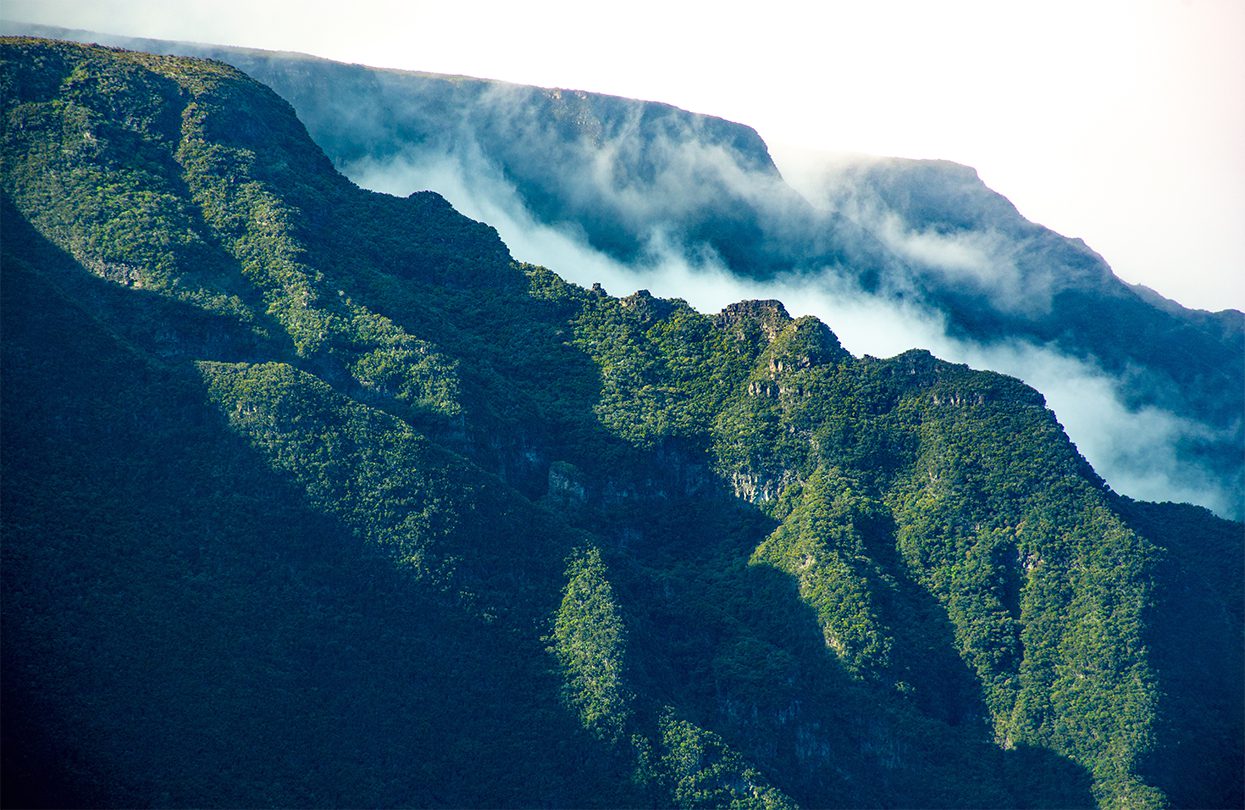
Expect jaw-dropping scenery in Réunion
Stroll Stone Town
Zanzibar
With streets too small and tightly crowded for cars to cruise along, Stone Town in Zanzibar is not only pedestrian-perfect, but it’s also a labyrinthine odyssey.
For centuries the island was an indispensable stop on the global trade route that conveyed spices, slaves, sugar, precious metal and animal goods such as ivory across the globe. It was port to Portuguese seafarers and colonials from Britain, France and the and bore other Arabian traditions, such as the angular dhow ships that continue to sail the Indian Ocean today. A visit to the heady centre can overwhelm at times, but this vibrancy makes it all the more exhilarating.
We start our exploration – my partner and me – of the perpetual back alleys by walking to the Darajani Market at dawn. Stone Town has thrummed throughout the ages, but these are the ideal hours for a tranquil exploration. Compared to the sheer tumult of the evening before (when we’d arrived near dusk), the cobbled streets are a calm contrast this morning. Plus, we want to visit before the tropical heat transforms the fresh fish market into an odorous offence.
The market proffers Stone Town at its most sensational (in the literal meaning of the world). Stalls brim with spices – whole nutmeg, thick cinnamon chunks, fragile rods of dark vanilla and their accompanying fragrances that made the island so famous. Tropical fruits hang seductively from the wooden stands, and fresh pweza (octopus), tuna and more are auctioned to a cacophony of locals. We taste rambutans for the first time, peeling back their spiky skins, stock up on palm-woven baskets and colourful kangas before the internal call for coffee gets too loud.
Leaving the market, we turn back into the ancient Arabian medina maze that is Stone Town. The alleyways seem narrower thanks to the towering buildings, and the crumbling capital stirs more with every inching sunbeam. Women set up flasks and steaming pots as passing people switch Swahili hellos and how-do-you-dos. “Jambo, habari?” and in response “Nzuri!”.
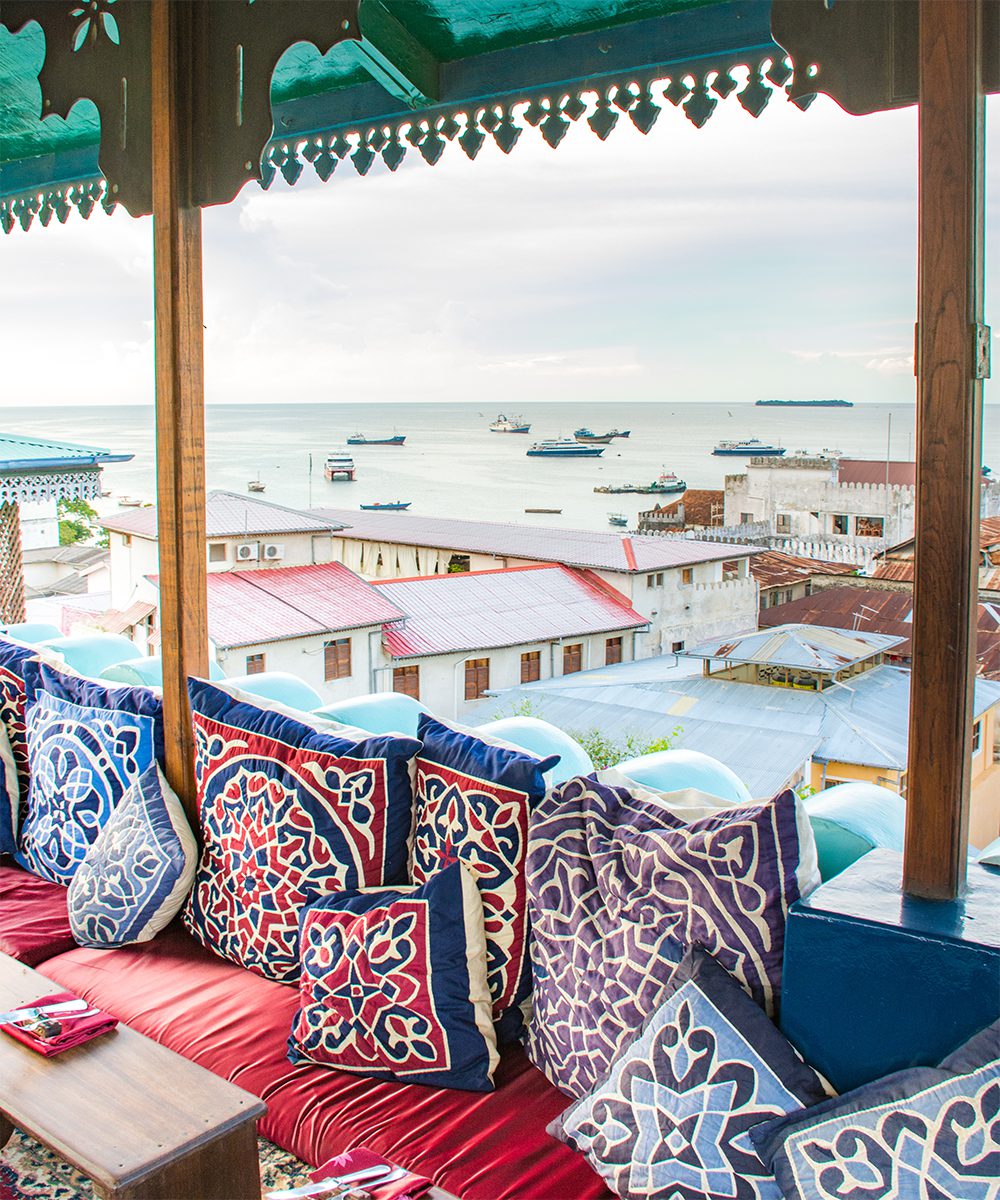
Sunset scenes from the rooftop at Emerson on Hurumzi
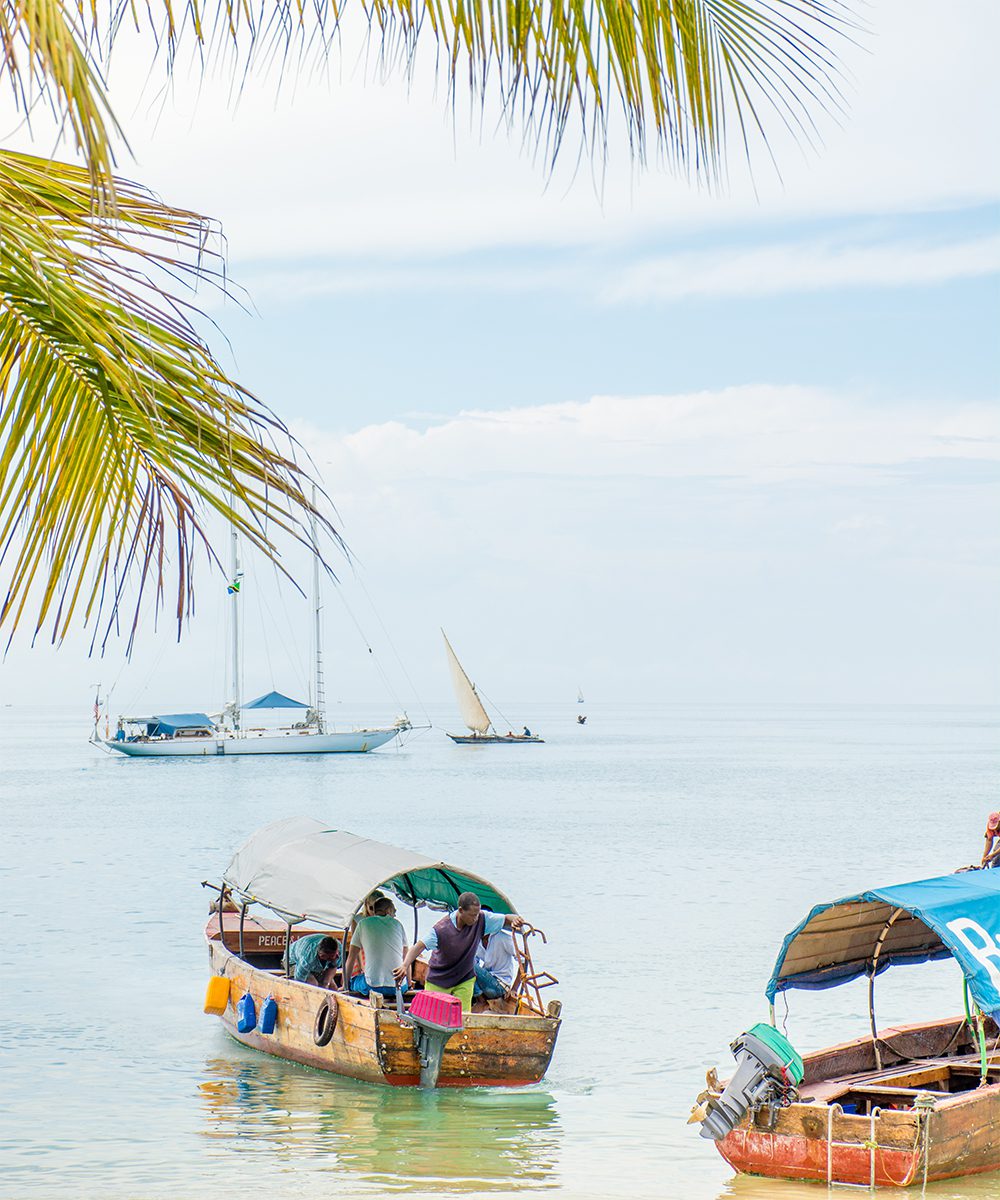
Tourists leave for one of many day trips to surrounding snorkel sites from Stone Town
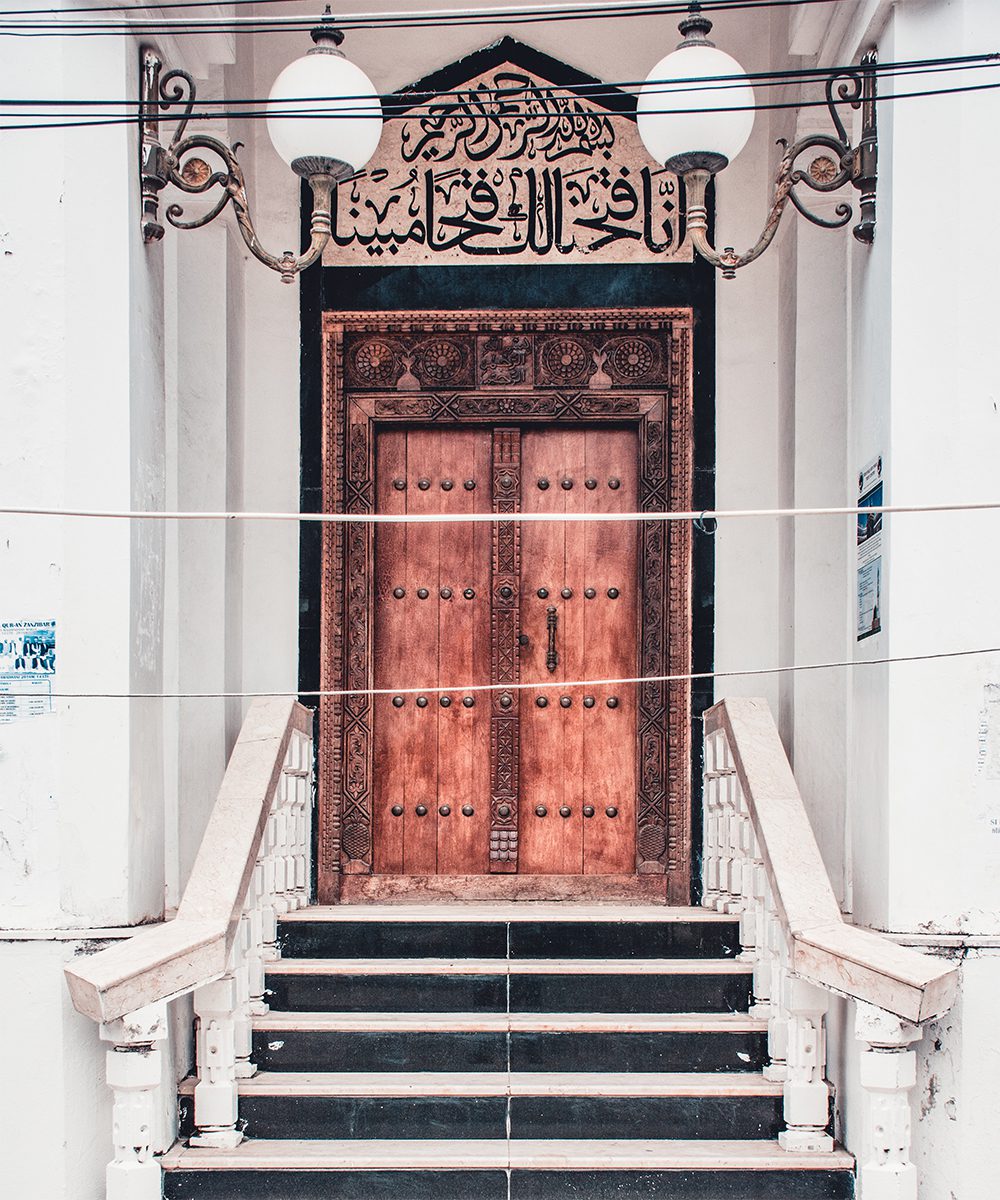
One of many adorned Zanzibari doors
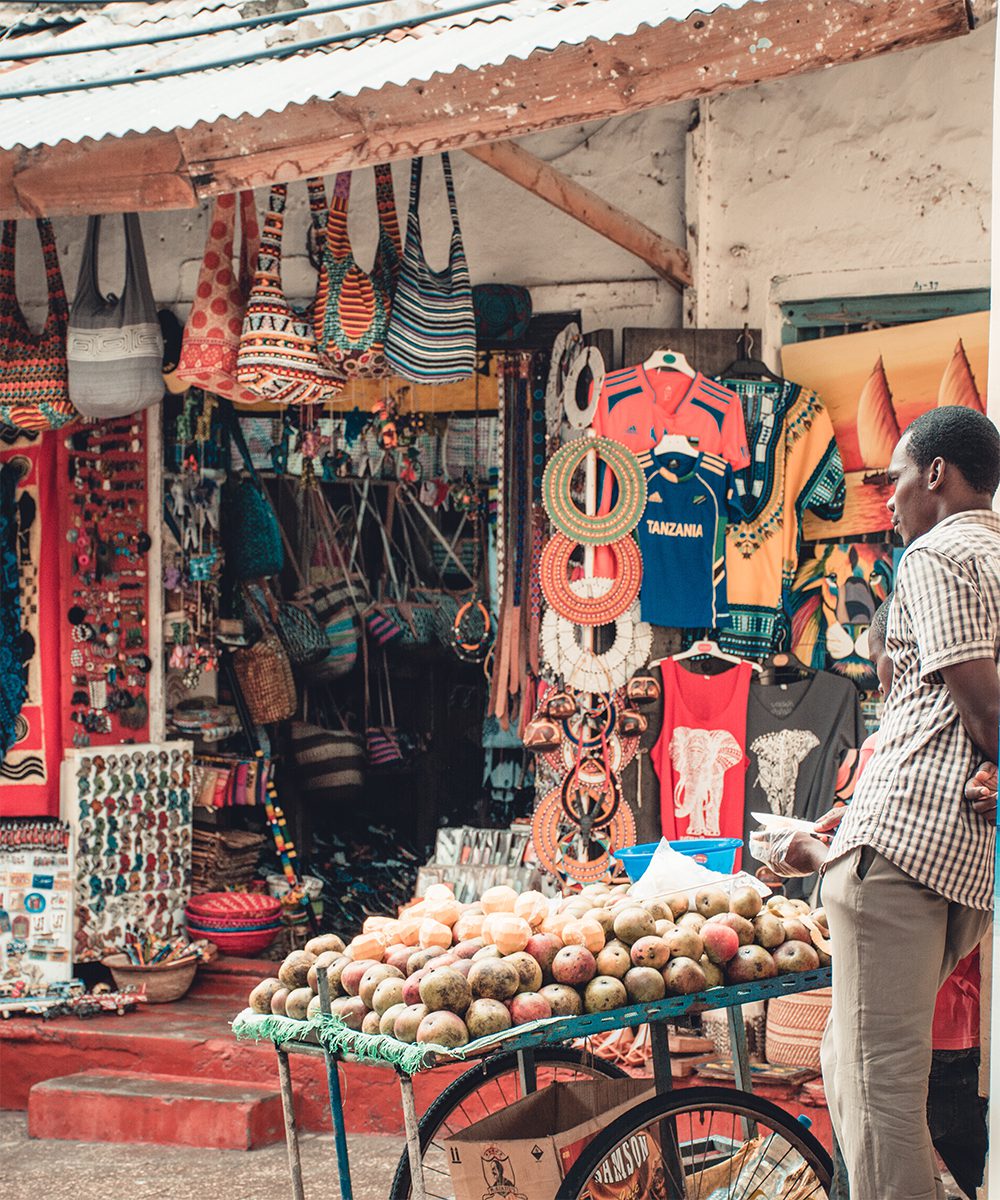
Curios and tropical fruits in a Stone Town alley
Iconic doors line these lanes, and they splendidly chronicle the history of Stone Town. Thanks to the intense seaborne trading activity between Asia and Africa, we identify three kinds: Swahili-style, Indian and Arab doors. In the beginning, the hefty wooden gateways were built to fend off elephants possessing pointed brass knobs. They grew more ornate than practical when flowers started to swirl up the frames, and then more geometrically-inclined designs began to appear. In the early 1980s, the Stone Town Heritage Society reported that just 800 doors existed. Thanks to high demand for these fine timber artworks numbers have dwindled even more. I linger at every jaw-dropping structure. Coffee can wait.
By lunchtime (and after an eventual visit to the renowned Zanzibar Coffee House), we reach the other end of the city. Strolling past the profound misnomer that is the ‘House of Wonders’, I can’t help but gasp when confronted by the gemstone blue view. Courageous children throw themselves from the harbour walls into the lapping water of the Indian Ocean for a reprieve from the sticky heat. We opt instead for a cold Tuskers beer from the Floating restaurant. Dhows drift indolently across the vista and on the nearby beach, tourists gather to enjoy an afternoon out — either a sandbank barbecue or snorkelling no doubt.
Although it might have been more carefree to disappear into the smooth waters with them, we disappear again instead into the tangled town. We fend off calls to glance inside the souvenir stalls (beaded sandals, sarongs flipping in the wind, carved wooden keepsakes) but ultimately escape the sun and hubbub.
Zanzibar’s only downfall may be its popularity, I think, but thankfully there are sophisticated sanctuaries one can flee to. The grand teahouse at the top of the Emerson onHurumzi hotel is one such delight. Seated on cushions and sated with Singapore Slings, my boyfriend and I relish sunset from so high up. Then, after so much strolling, we devour the Zanzibari dinner before retiring. ‘Comfortable’ goat (free-range terminology lost in translation) stewed with sweet pumpkin and spices is easily the most delicious meal I’ve had in East Africa date.
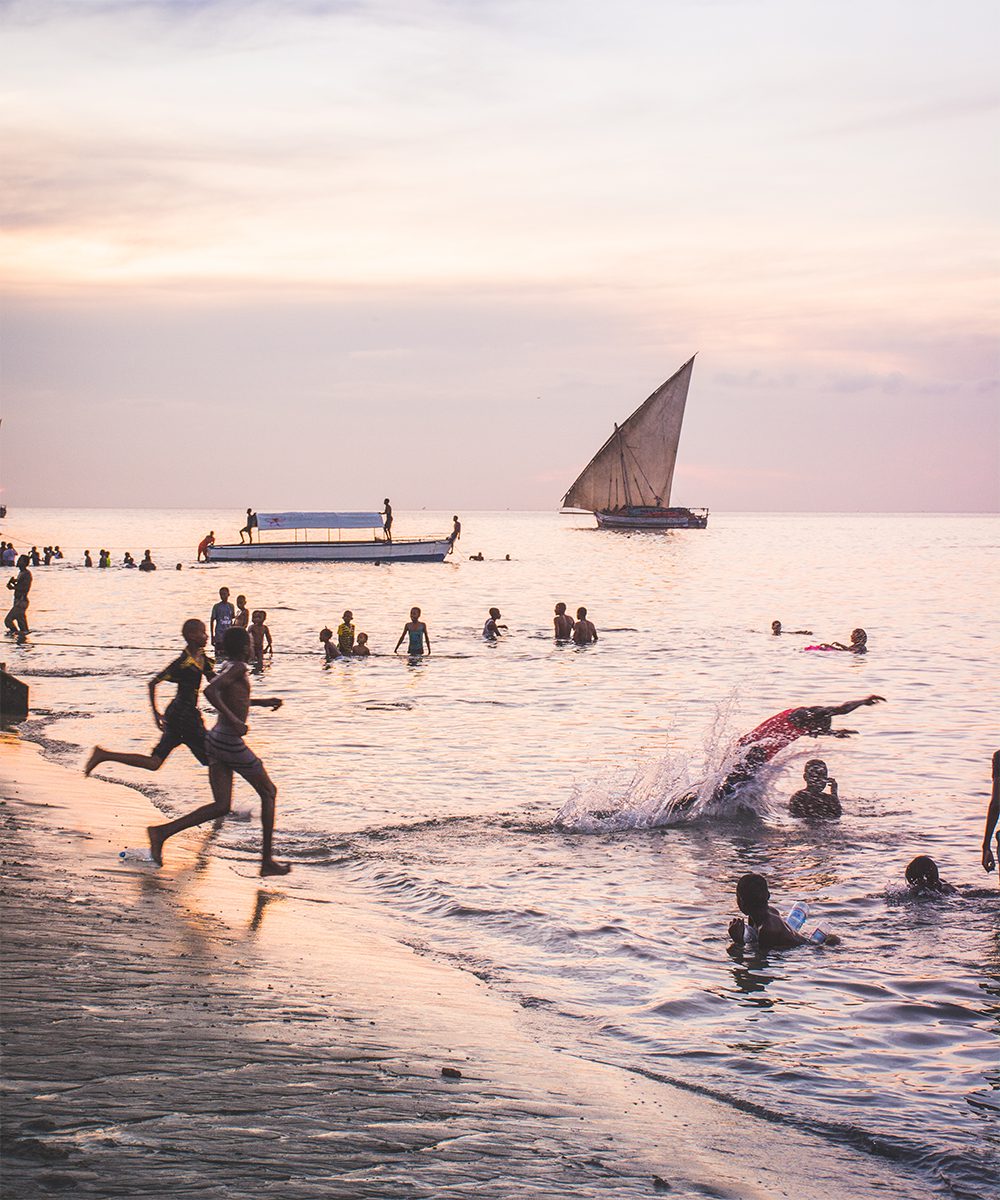
Sunset on the festive shores of Stone Town
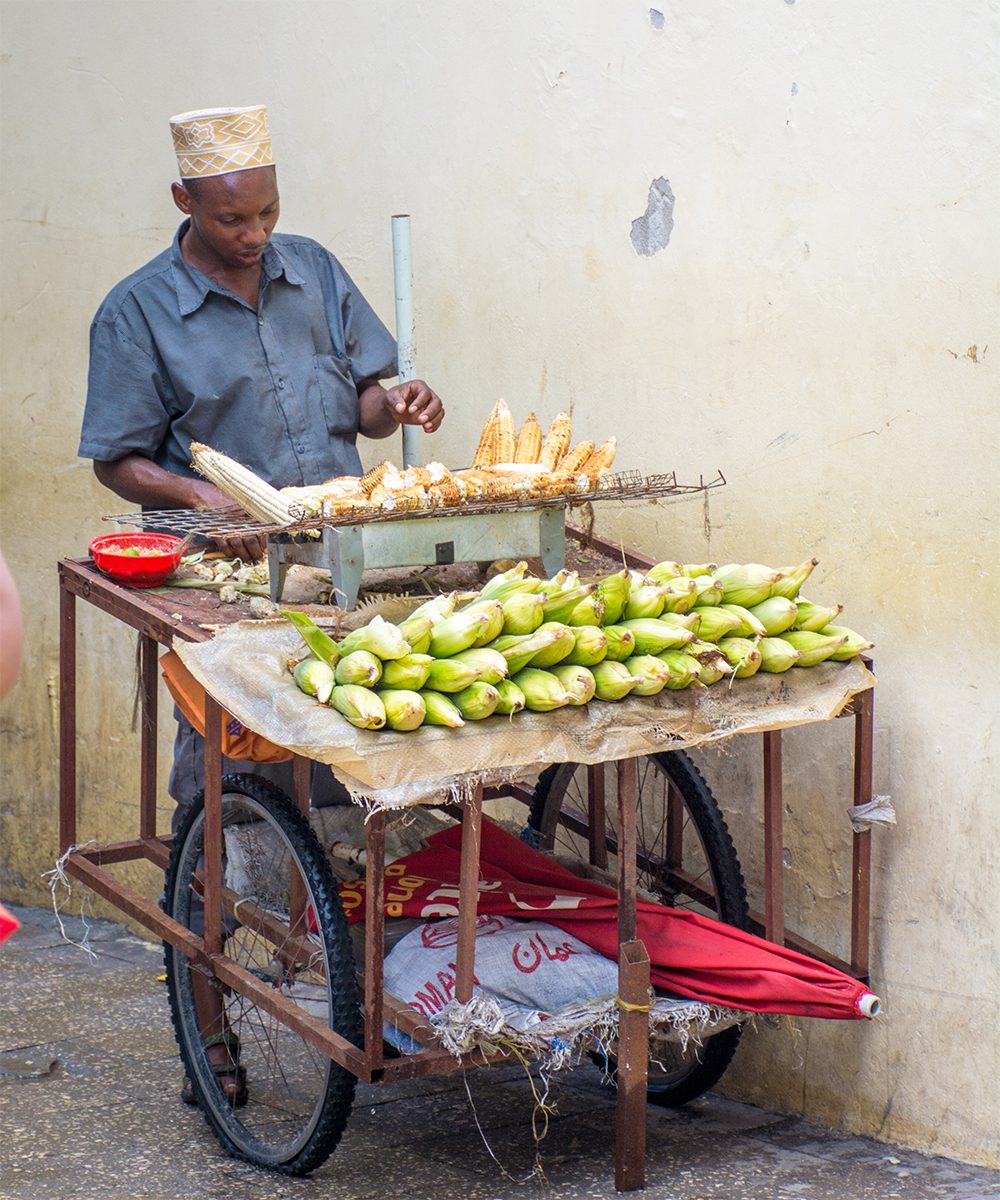
Corn cooked while you wait
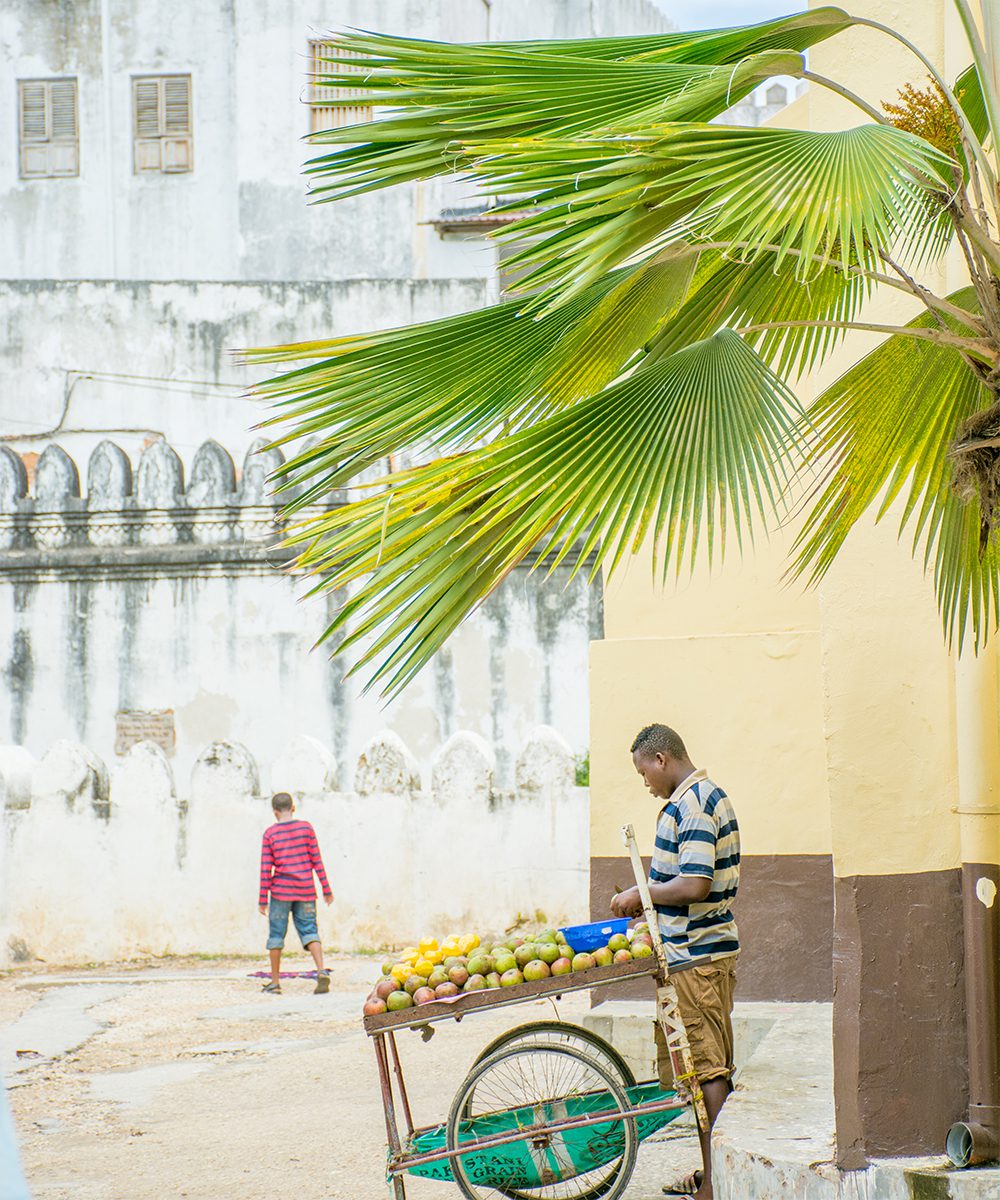
Fresh mango vendors
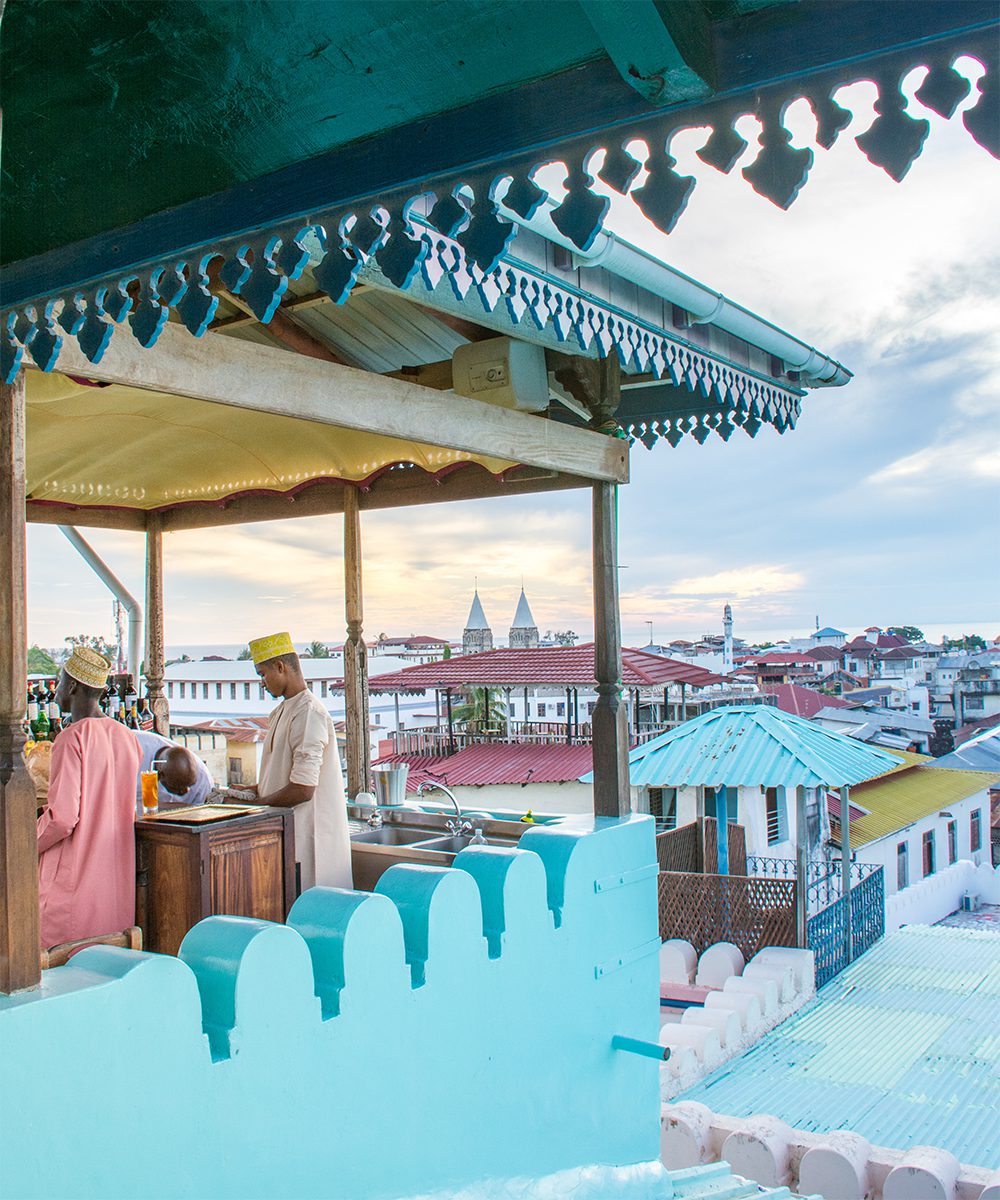
Singapore Sling preparation at the beloved Emerson on Hurumzi Teahouse
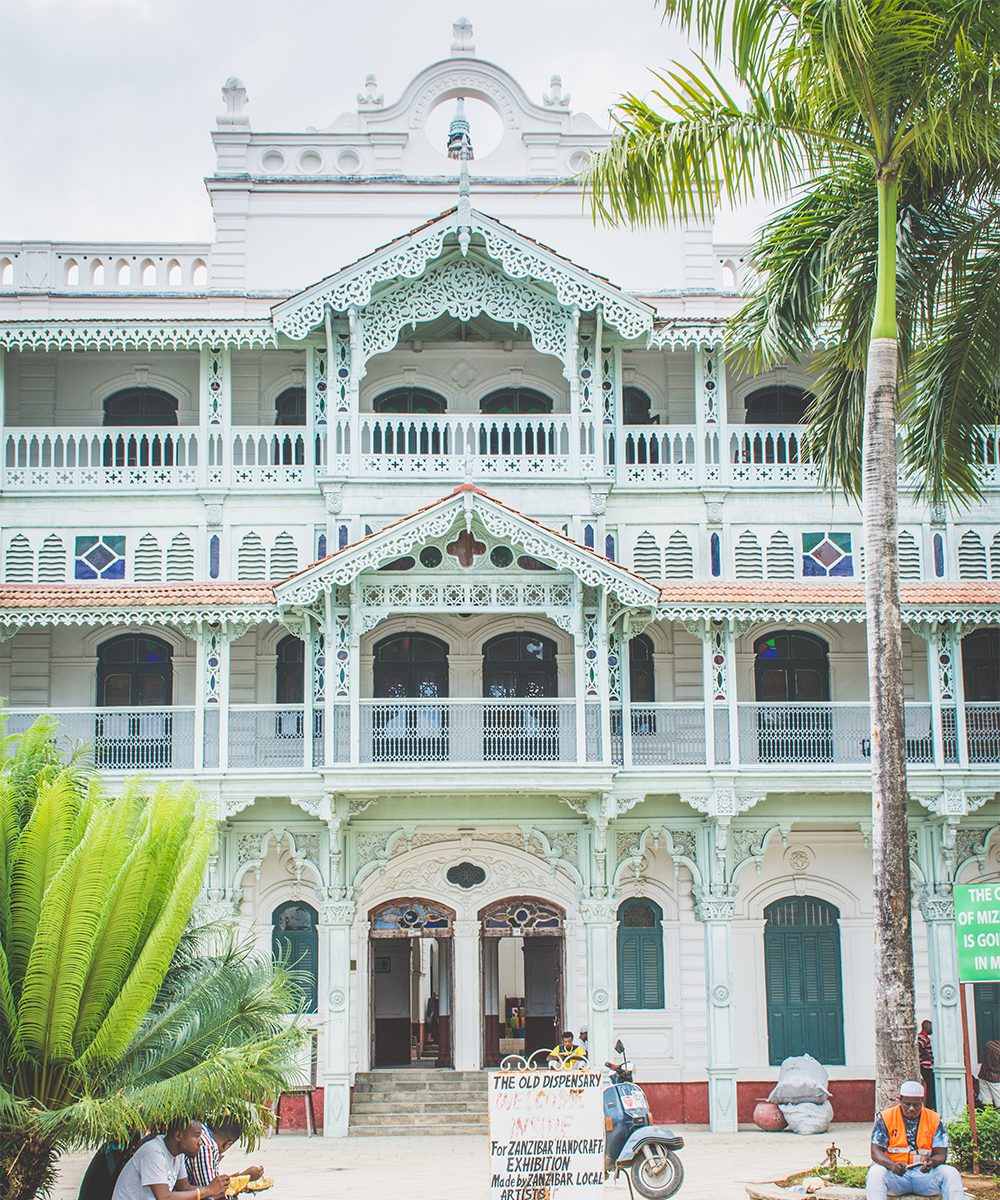
Located on the seafront, the Old Dispensary served patients in the early 1900s
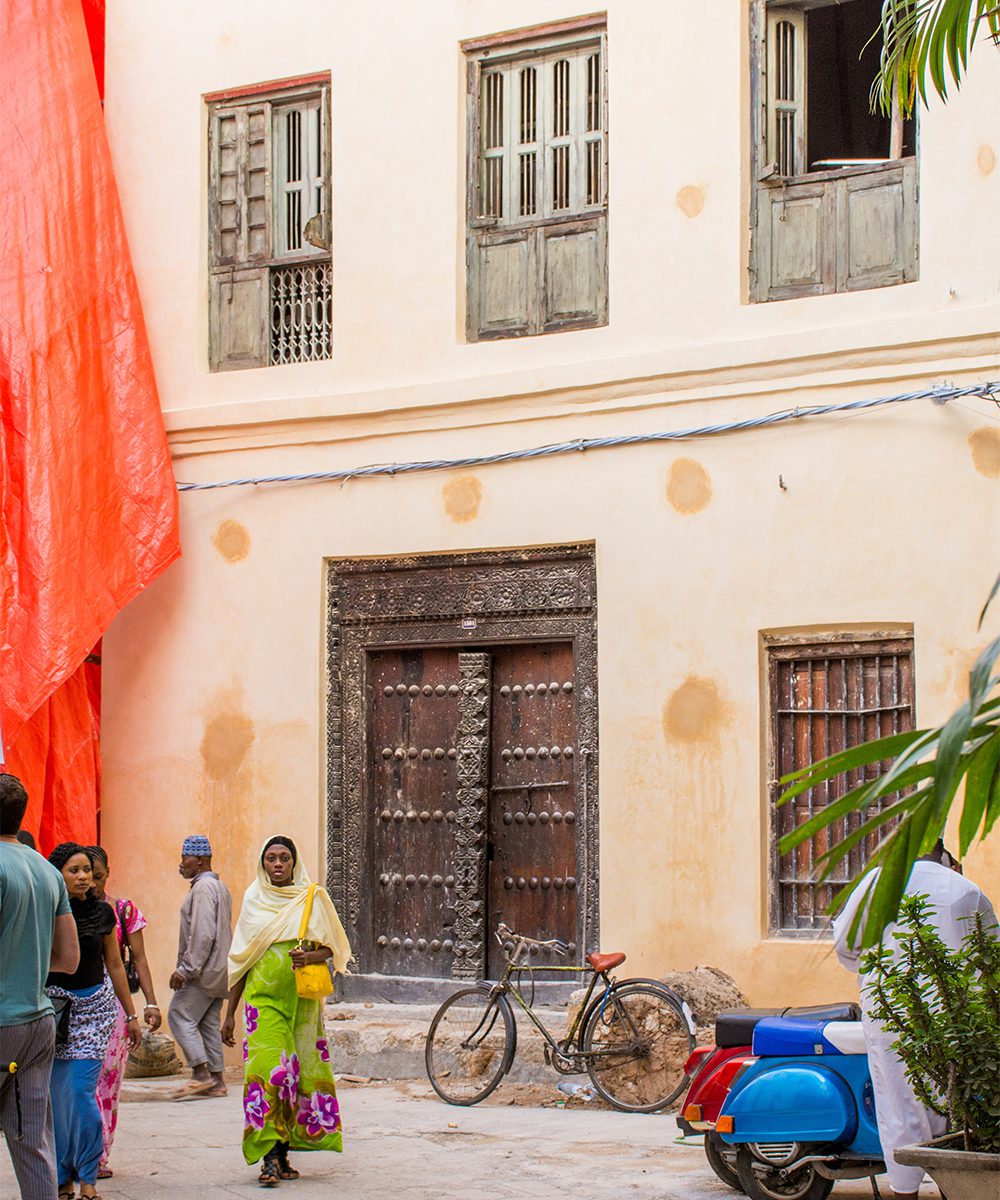
Classic Stone Town scenery
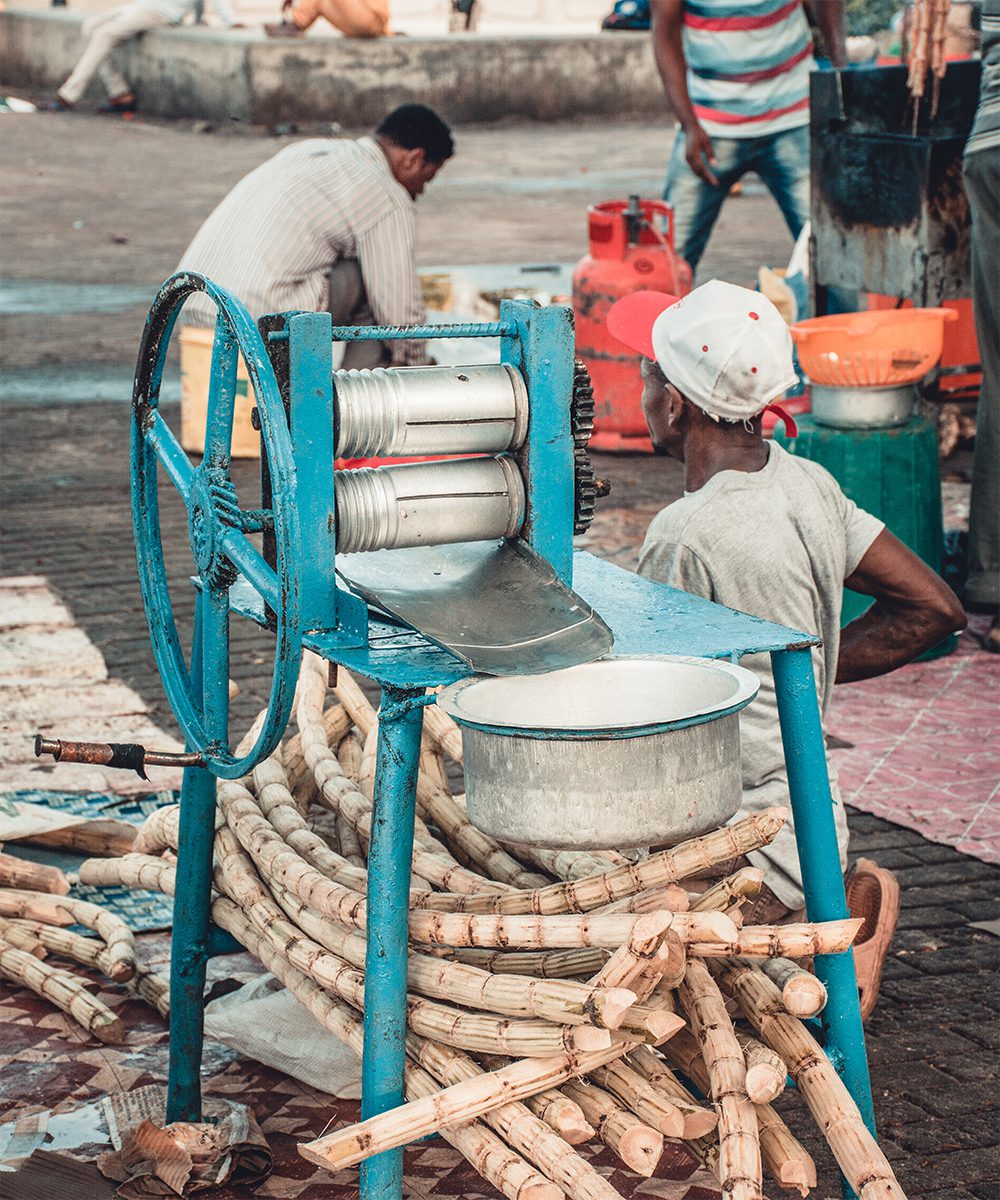
Find fresh sugarcane juice at Forodhani Gardens
The city reached UNESCO World Heritage status because “It retains its urban fabric and townscape virtually intact and contains many fine buildings that reflect its particular culture”. Indeed, it is not easy to outdo the living history experienced by strolling Stone Town.
Consider a retreat at Chiuni Zanzibar Beach Lodge. Based just 12 kilometres away from the mazes of Stone Town, this sanctuary offers the best of the beach, with private bungalows spread over a hectare and sensational sea views, alongside authentic island biography since the boutique stay was once a sultan’s residence (newmarkhotels.com). Otherwise, head to the east coast and settle into Tanzania’s only Relais& Châteaux property, Zanzibar White Sand Luxury Villas (whitesandvillas.com). Based an hour from Stone Town, do a full day tour with their excellent guides, who offer insider advice — such as where to buy the best top-shelf spices.
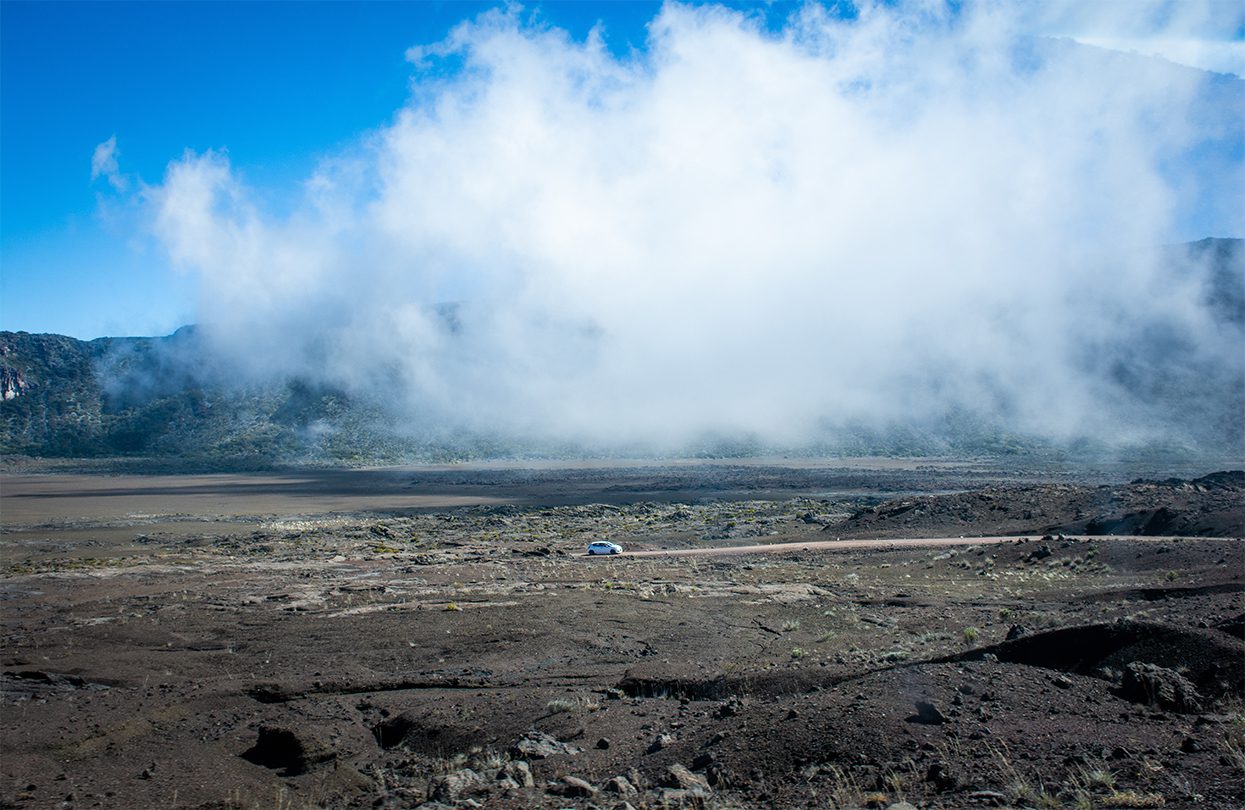
Lunar landscapes near the crater of Piton de la Fournaise
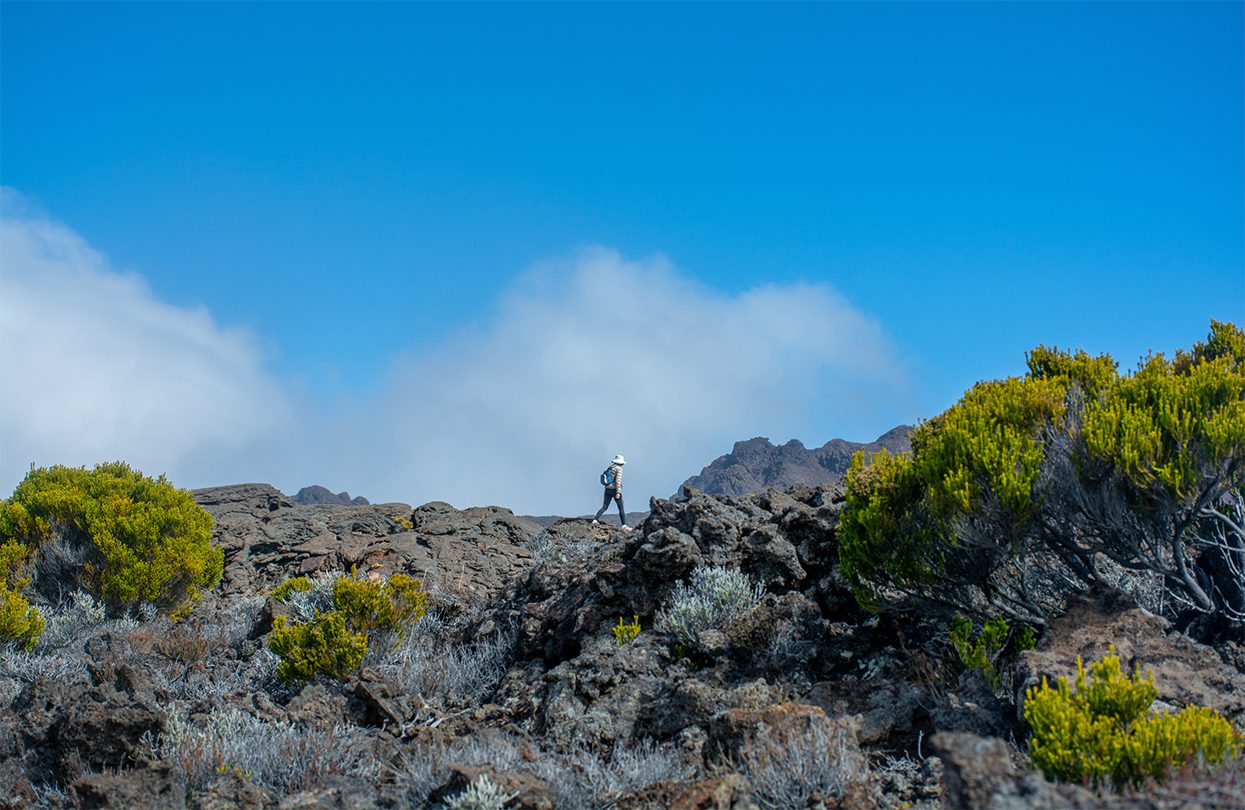
Reunion Piton de la Fournaise – The volcano is free to visit
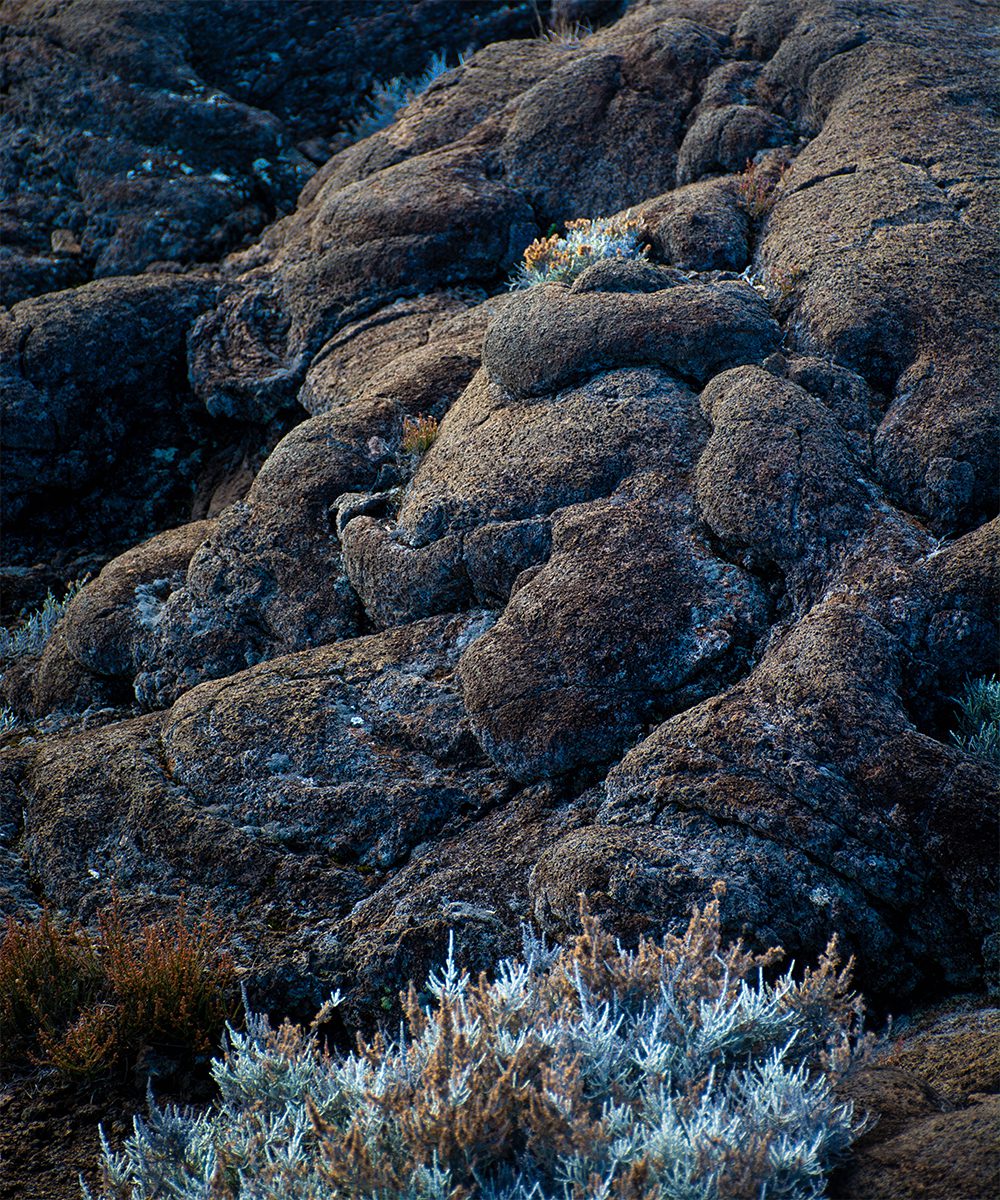
Reunion Piton de la Fournaise – freshly molten magma hints at the activity around here
Easy Adventure
Réunion
Just east of Madagascar lies a sorcery of scenery. Almost half of the French island of Réunion is listed and protected as a UNESCO World Heritage Site if that hints at the flourish of natural wonder.
Piton de la Fournaise(Peak of the Furnace), is undoubtedly the main tourist attraction on the island and, having erupted almost 200 times over the last 350 years, it offers plenty of volcanic action in itself. However, it’s the jawdropping mountain landscapes created by the vigorous geology that makes Réunion such a fascinating destination.
In a mere matter of 98km, I leave the languid lagoons (and easily the prettiest beaches of the predominantly rocky island) of Saint-Gilles-Les-Bains and find myself standing on the craterous edge of an active volcano, where Piton de la Fournaise lies 2350m above sea level.
In between the beach and the startling martian landscapes that surround the volcano, there are tropical forests, pretty mountain villages and several boutique hotels. The food, transport and even wine are presented in European packaging to boot. Croissant anyone? For ease, Réunion scores top points.
It was somewhere during the in-between land (after the seaside and before the magma) where waterfalls ribboned down the mountainside, that I surprised myself.
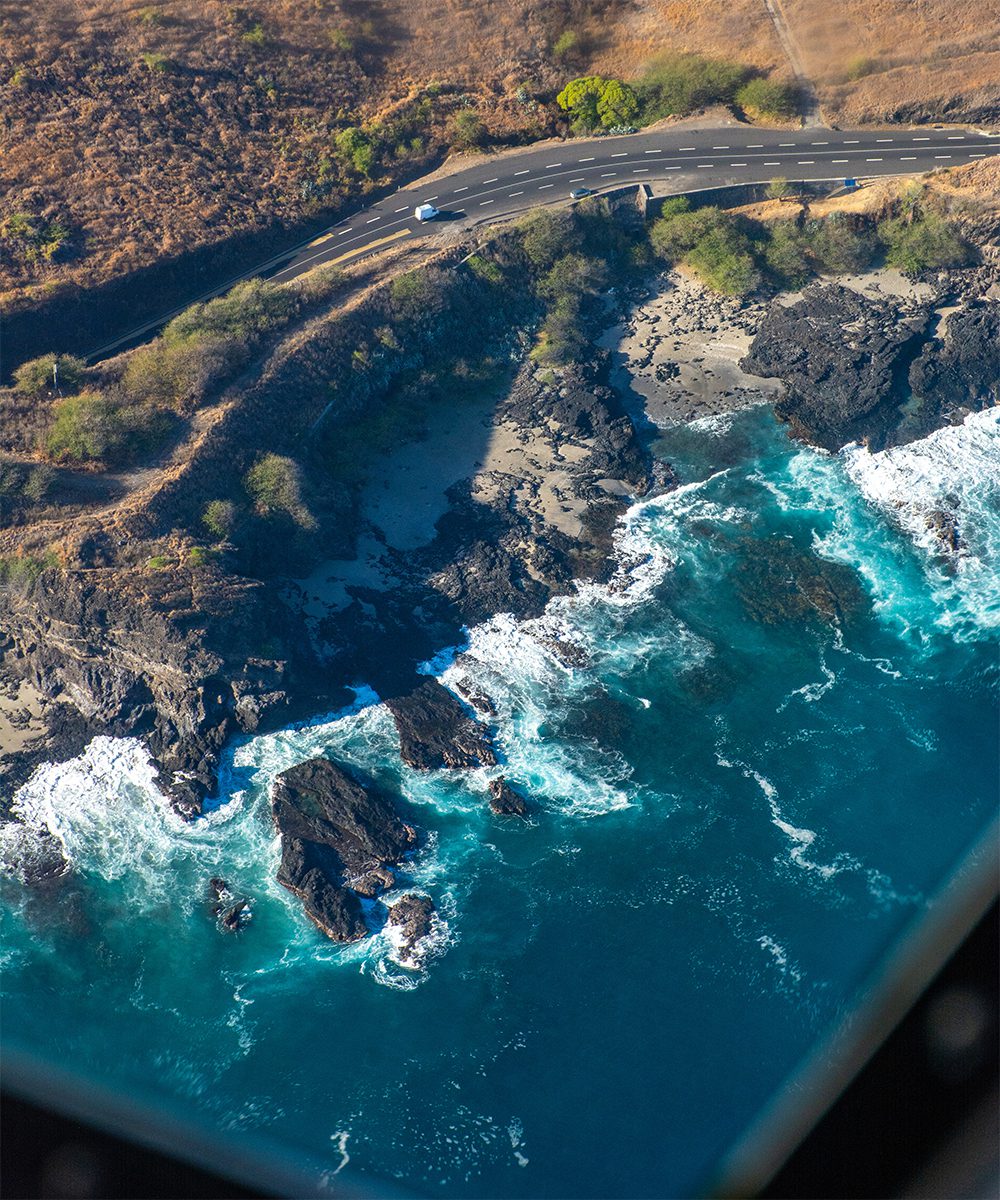
Sweeping seaside roads ring the island (best seen from a helicopter flight)
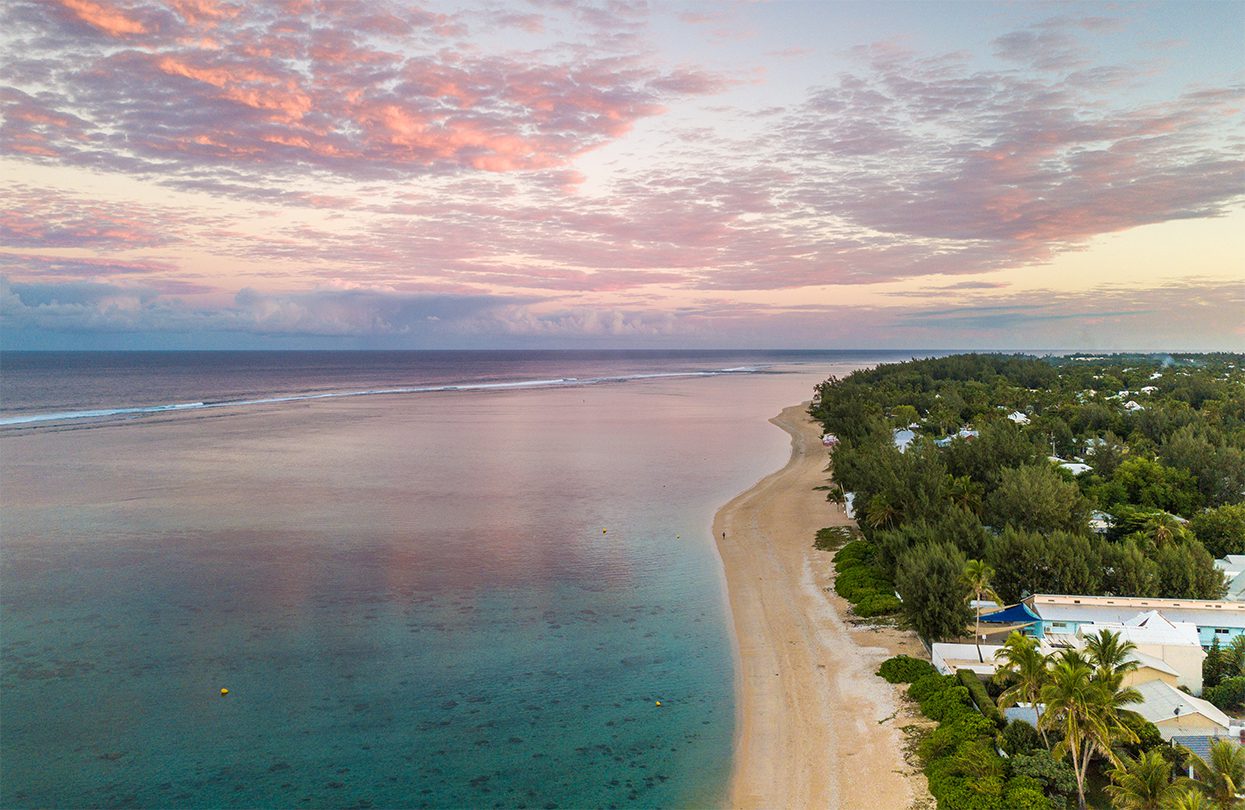
The western coast offers your more typical tropical island panoramas
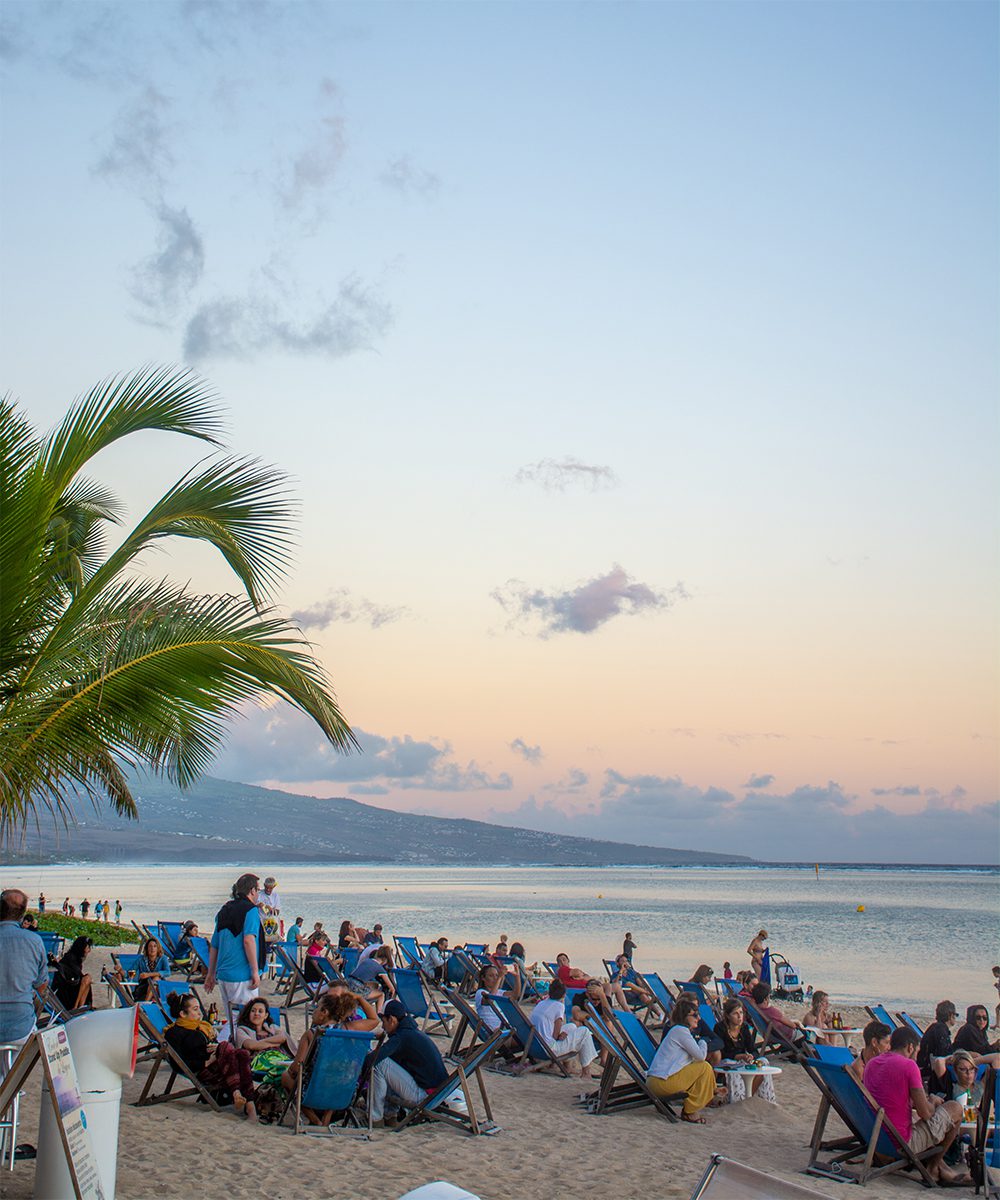
Friday afternoons buzz on the west coast beaches
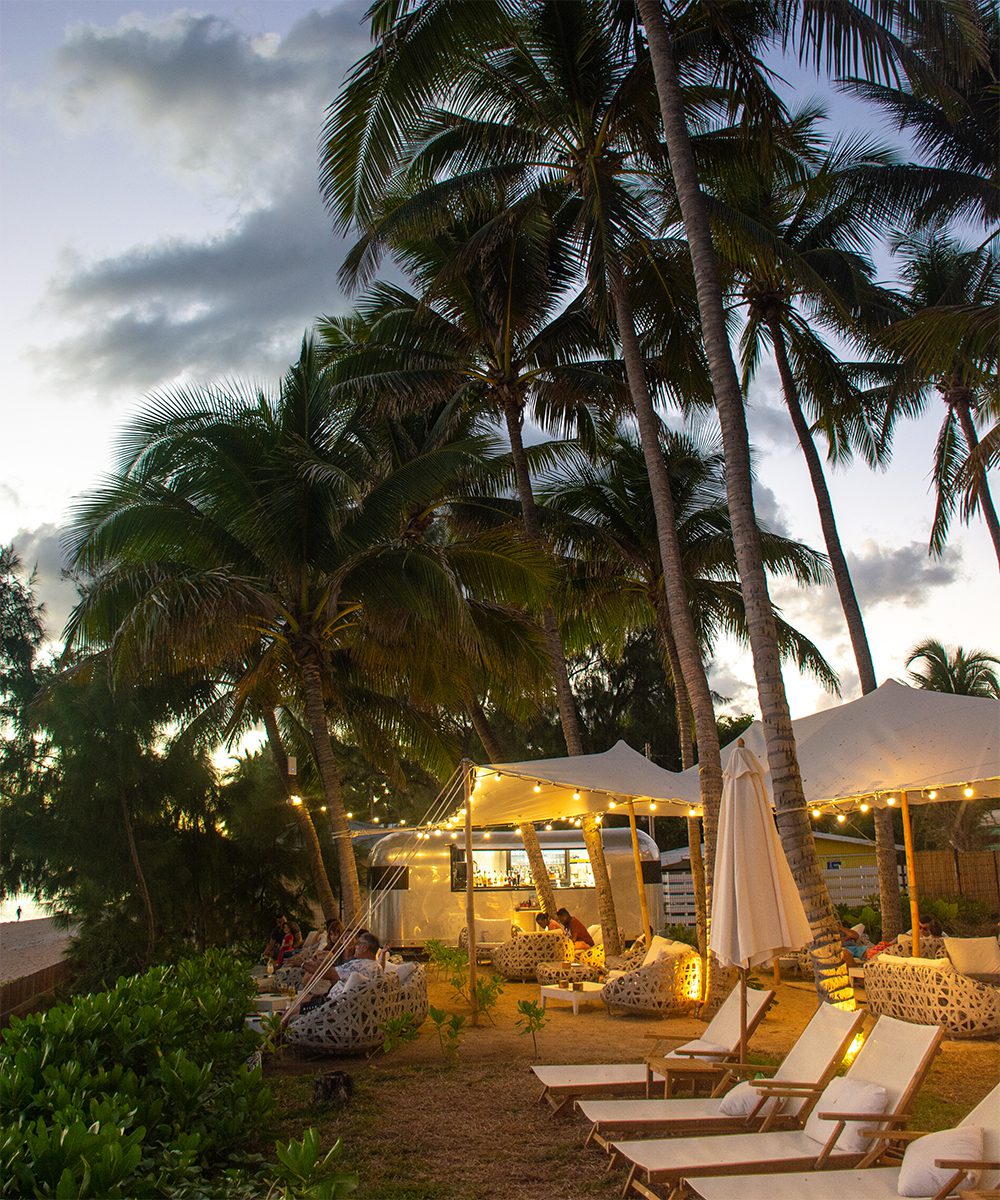
Park off on the palm-lined shores
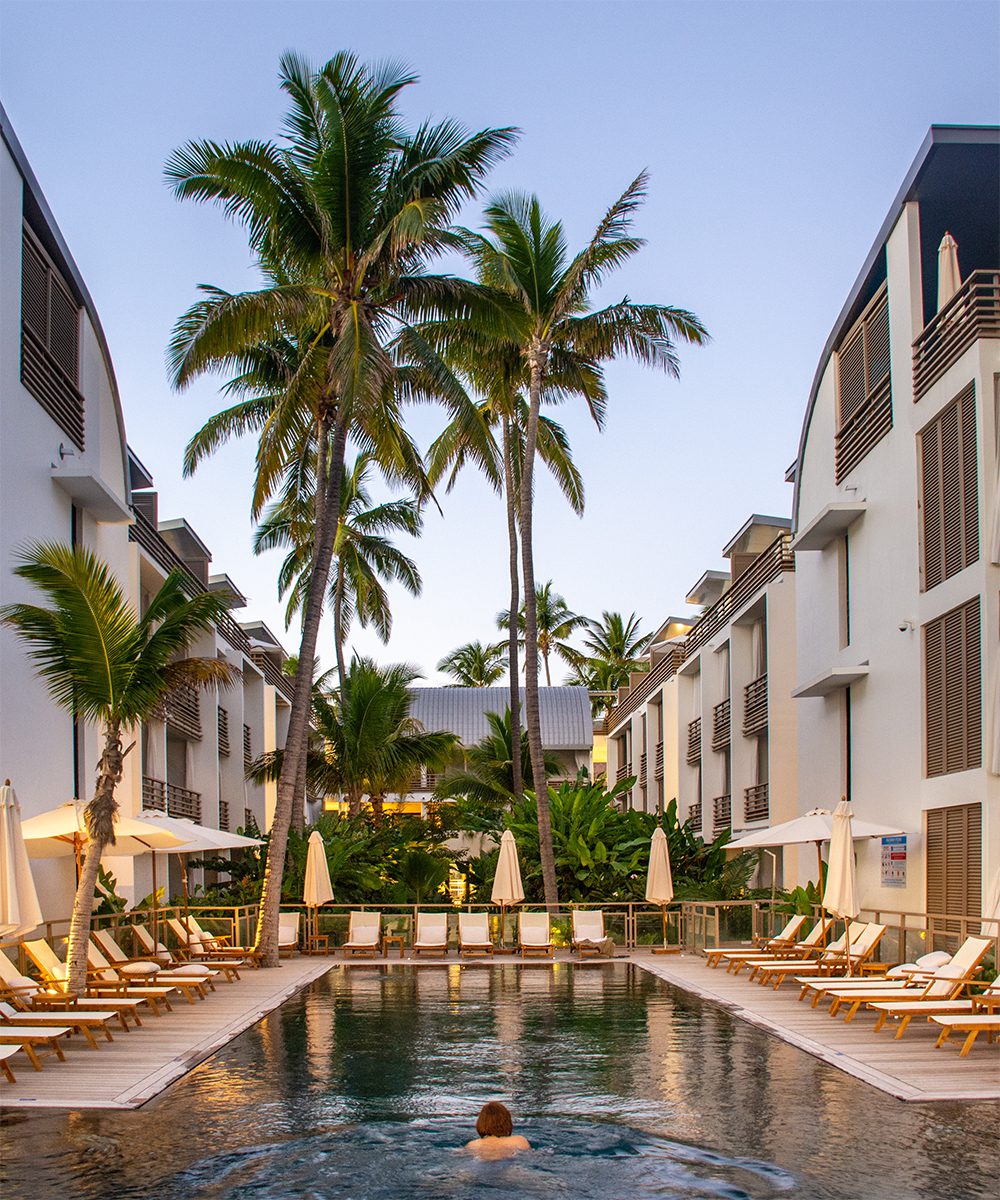
Ness by d’Ocean Hotel is the newest resort addition to the west coast
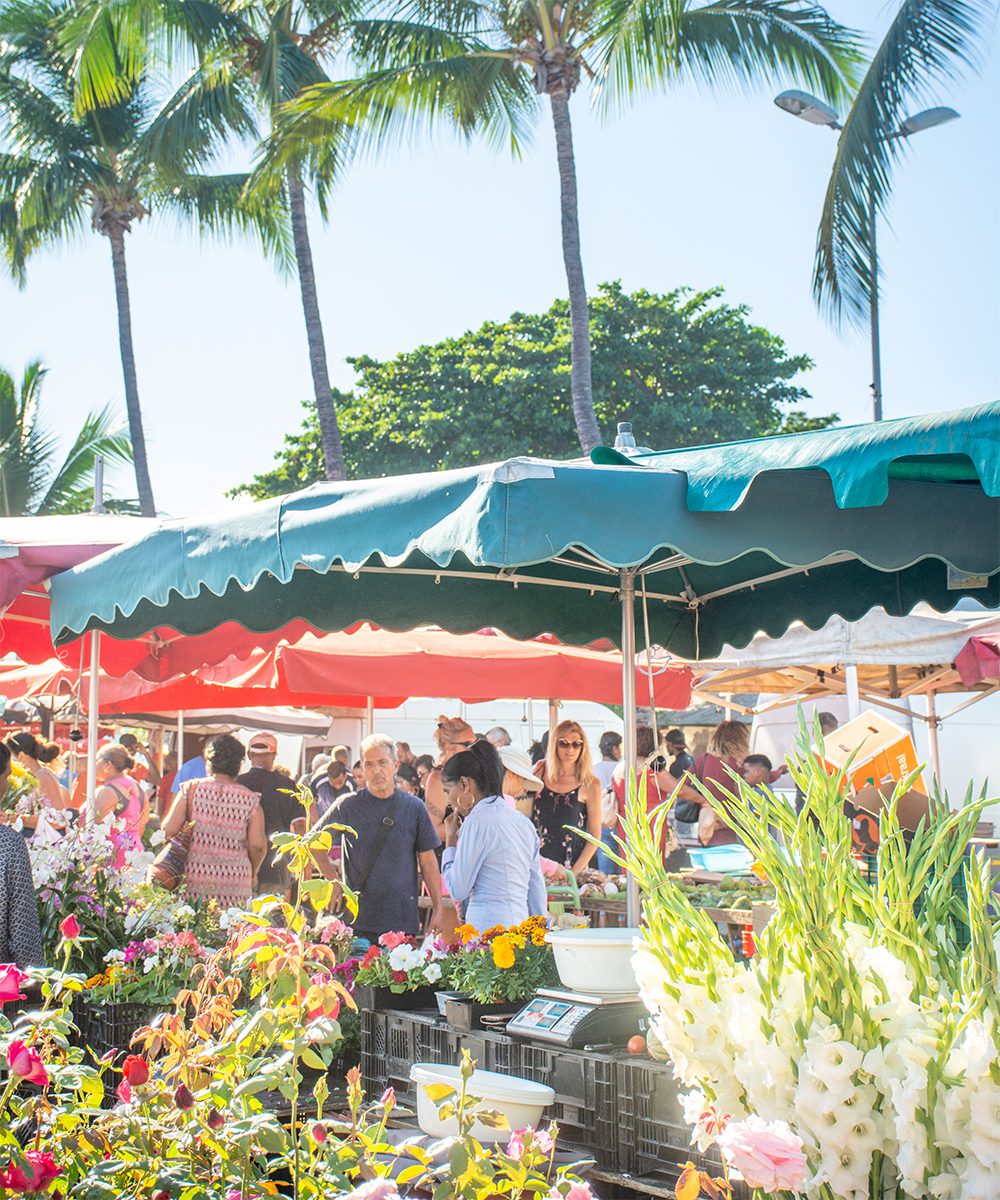
The weekly market in Saint-Paul
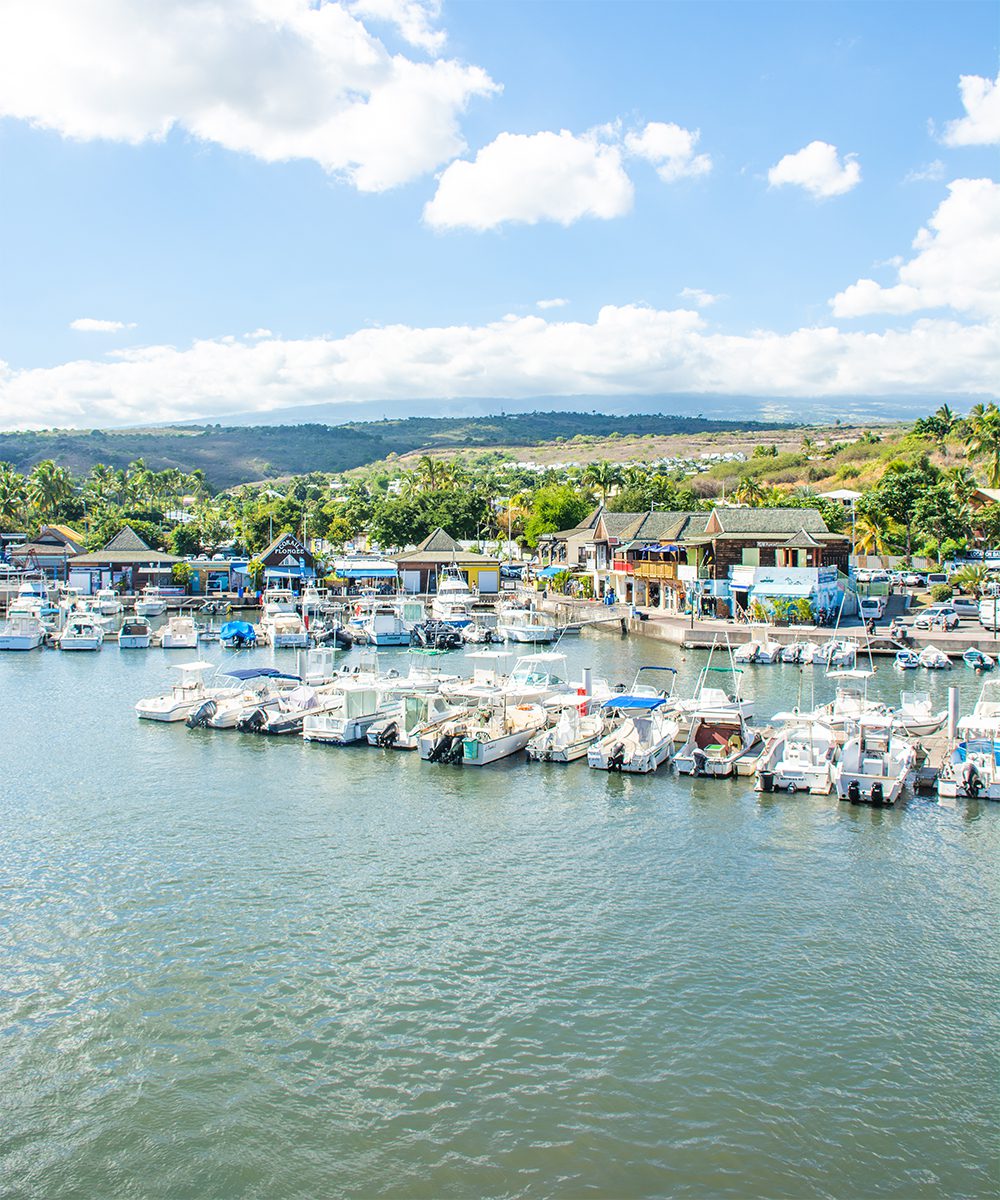
Swimming in many places is prohibited due to sharks, but there are some safe spots (mostly on the West Coast of the island)
Dressed in a thick wetsuit, clicked in with ratchets, carabiners, helmeted and well-adorned with climbing ropes, I attempted canyoning for the first time. I had no idea how plunging a ravine could be. Or just how bracing mountain water felt. Abseiling was first up – all or nothing – and my guide rattled off instructions with a thick French accent, but I was otherwise on my own.
Strapped in, I had to let myself down the sheer cliff in a network of knots. My heart hammered all the way down, and it took an aeon to reach the bottom. However, once I docked on the rocks below, my stress mutated into rapture. Canyoning was kinda cool! The morning whizzed past in a mixture of epic rock jumps, sliding into mountain streams, clambering up slippery boulders and soaring down grand landscapes. Undoubtedly, this is the most sublime adventure can get.
Réunion is more geared to boutique hotels and B&Bs, but you can rely on the flawless convenience of Lux Saint Gilles Resort on the gorgeous western coast. Their sumptuous villas embrace the creole culture of the island and these vibrant shores make for the ideal exploration base. (luxresorts.com)
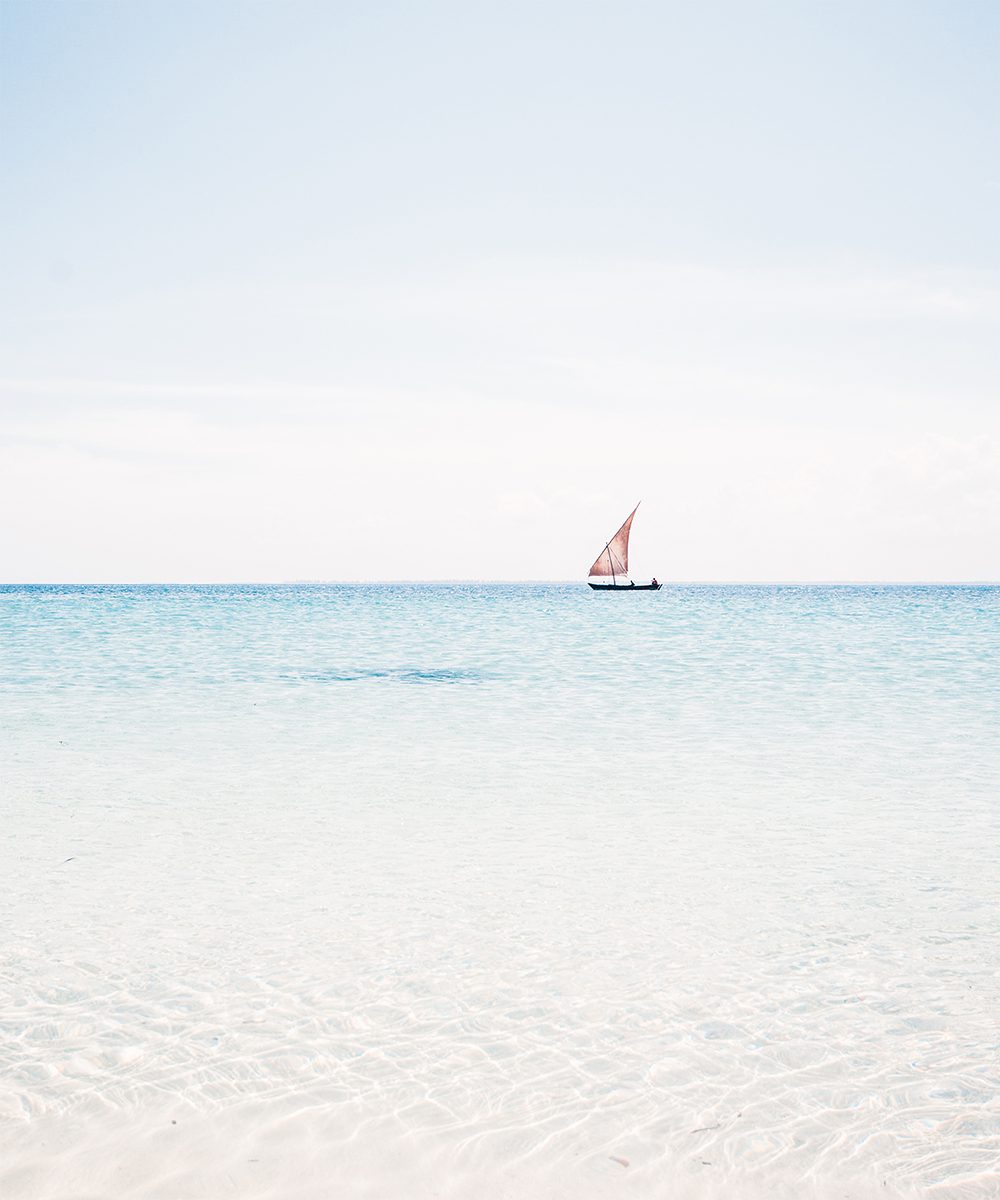
Dhows cross the ocean around Mafia Island as they have done for centuries
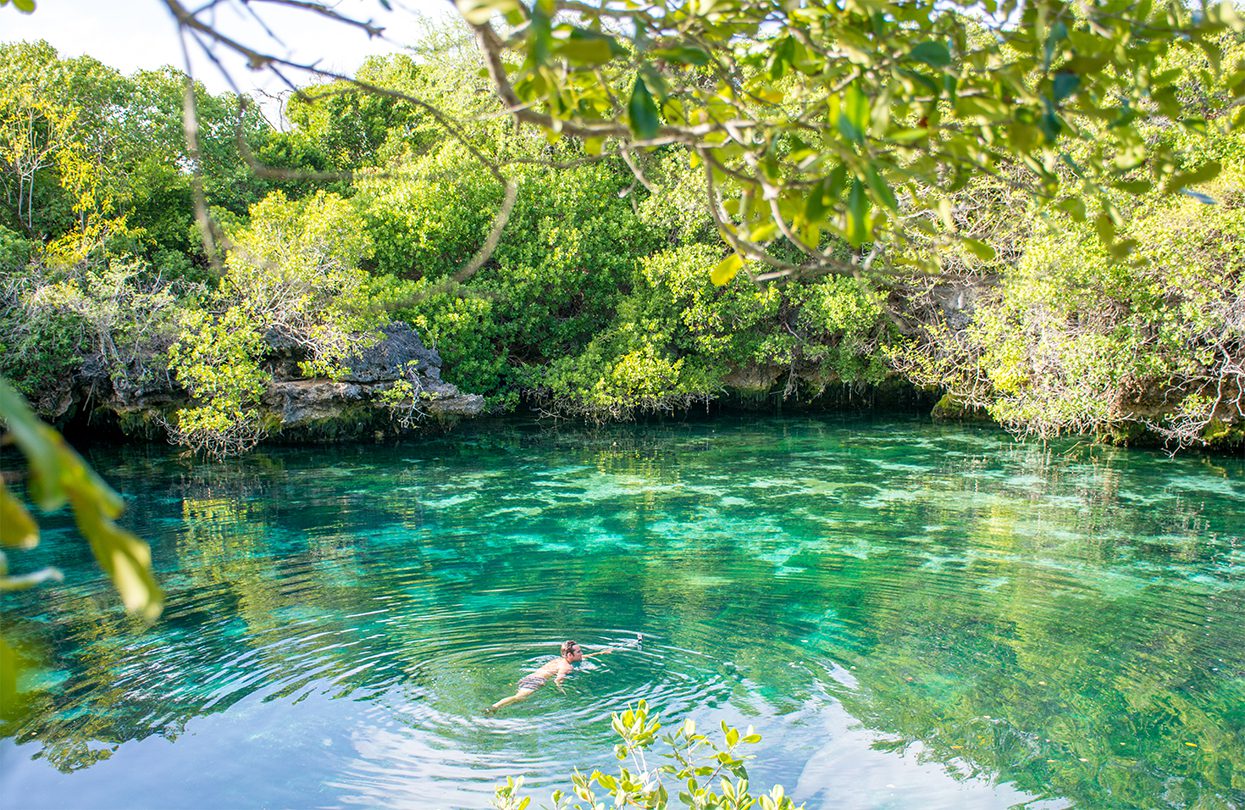
Mafia Island – Secluded freshwater pools dot the island
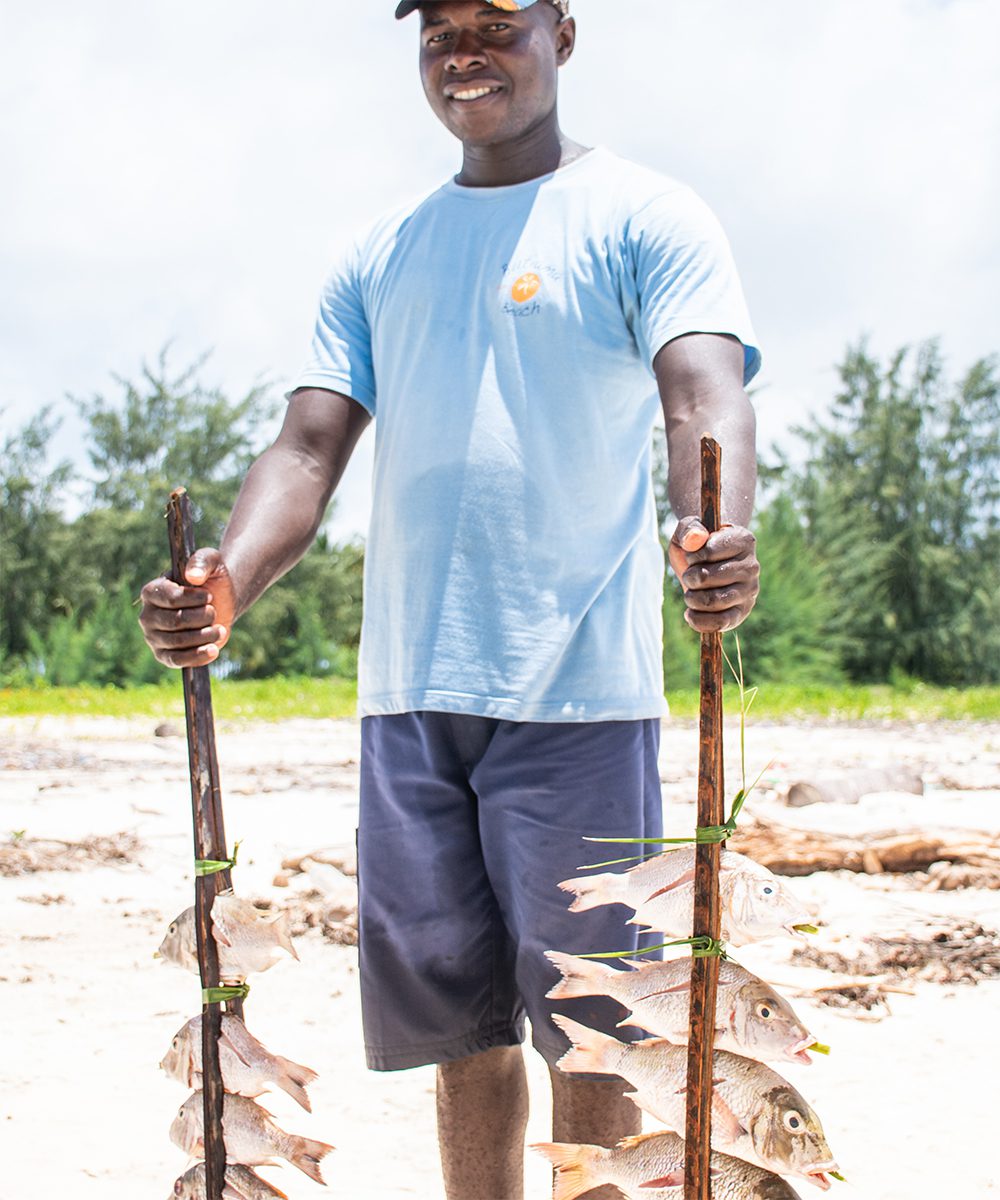
Mafia Island – Lunch on a sandbank with a fresh fish barbecue is a must
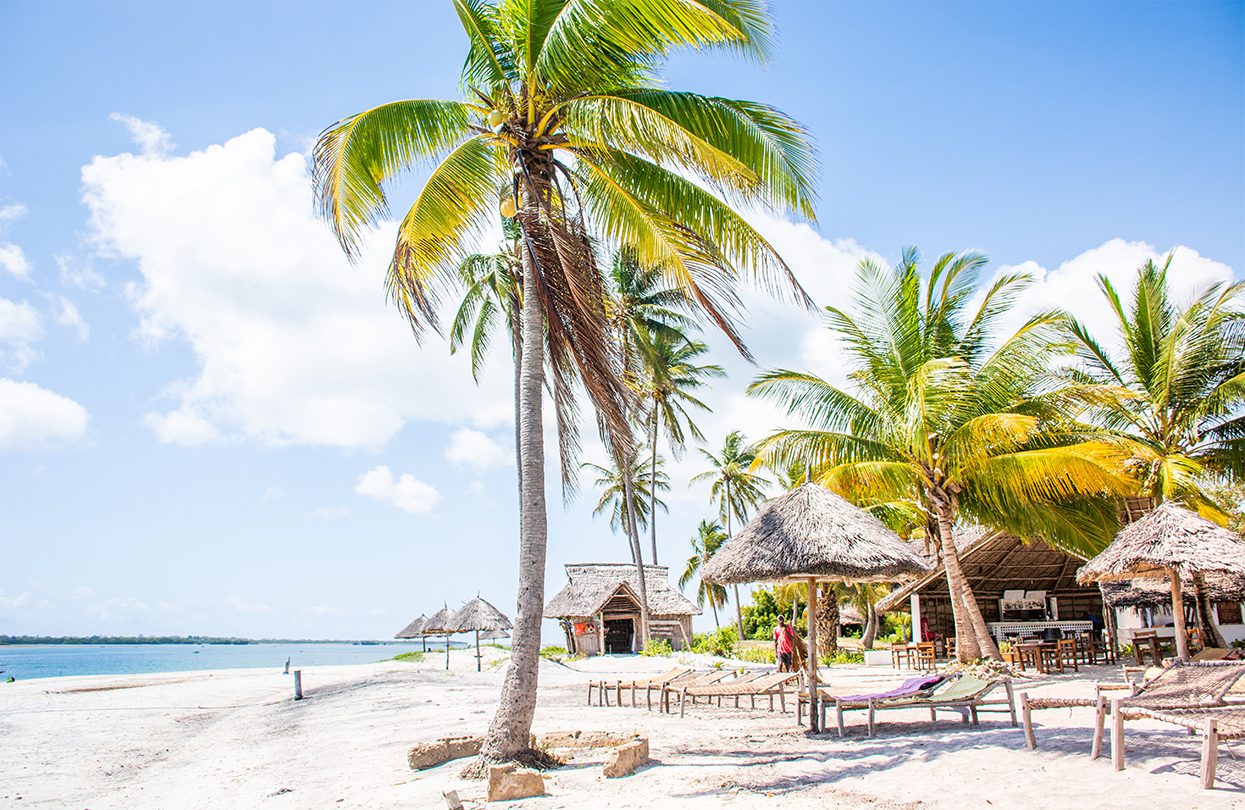
Mafia Island – Palms trees and the sea breeze epitomise days on the beach here
Swim With Sharks
Mafia Island
There’s an island off East Africa, just south of Zanzibar where the world’s largest fish like to hang out. Happily, it ain’t a bad place for humans either.
Our lightweight twelve-seater aircraft (the quickest and most dependable means of accessing the island) soars above the cerulean waters between mainland Tanzania and our end address at Butiama Beach in Kilindoni. Roughly halfway through the flight, someone spotted it. The unmistakable curve of a whale shark back, swimming far below us.
Home to a rich Marine National Park, Mafia Island flaunts distinguished reefs, and the diving is world-class thanks to the extraordinary variety of soft and hard corals plus a colourful diversity of tropical fish. Even more enthralling though, are its regular visitors, best seen with a simple snorkel.
Once strapped into a mask and with fins in place, I dive into the blue-green water I’d lusted over from the sky. The skipper timed it just right and had dropped us into the water just ahead of the immense creature. On the boat, we’d been carefully briefed though – stay clear of the tail (one sharp swish and it could knock you out) and always give the creature a comfortable berth. It’s much bigger than I imagined, and my sister shrieks into her snorkel on locking eyes with the fish once she identifies it underwater. Large sharks are estimated at over eight metres long, and this is one such splendid specimen. I grab her hand (“it just looks so much like a shark” she declares back on the boat), and together we fin like crazy to keep up with it.
It’s easiest to see them between October to February. Still, Mafia’s population of Rhincodon typus is unique in that they linger around the island throughout the year, according to the scientists at the Marine Megafauna Foundation. On our one morning excursion, our guide spotted three separate individuals and each time we jumped into the ocean. They move swiftly, but with grace and I noticed a pattern. It first bobs up to the surface, so you can sight their shadow-like shapes just below the surface when aboard the boat. Then they dive towards the sandy depths again, their dappled backs disappearing into the navy darkness — much like the status of the entire species, currently listed as endangered with IUCN.
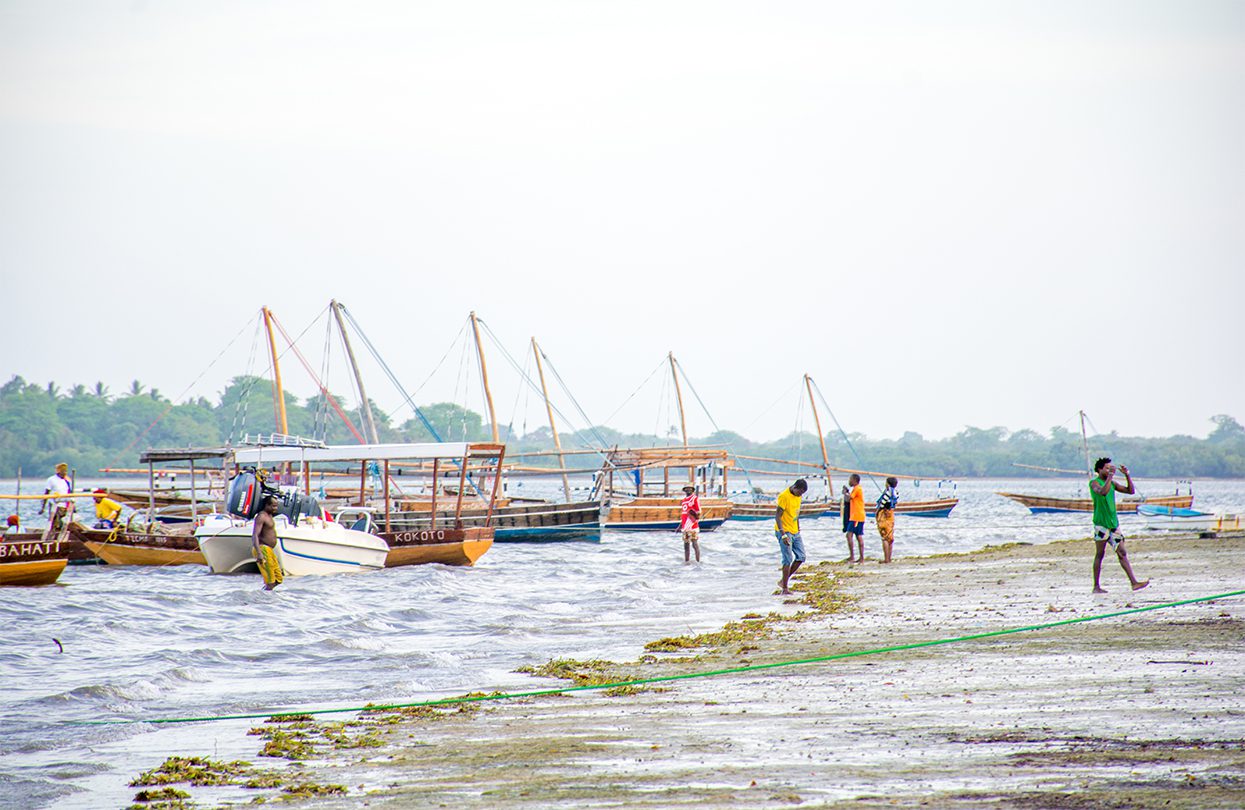
Mafia Island – Low tide at Utende in the Marine Park
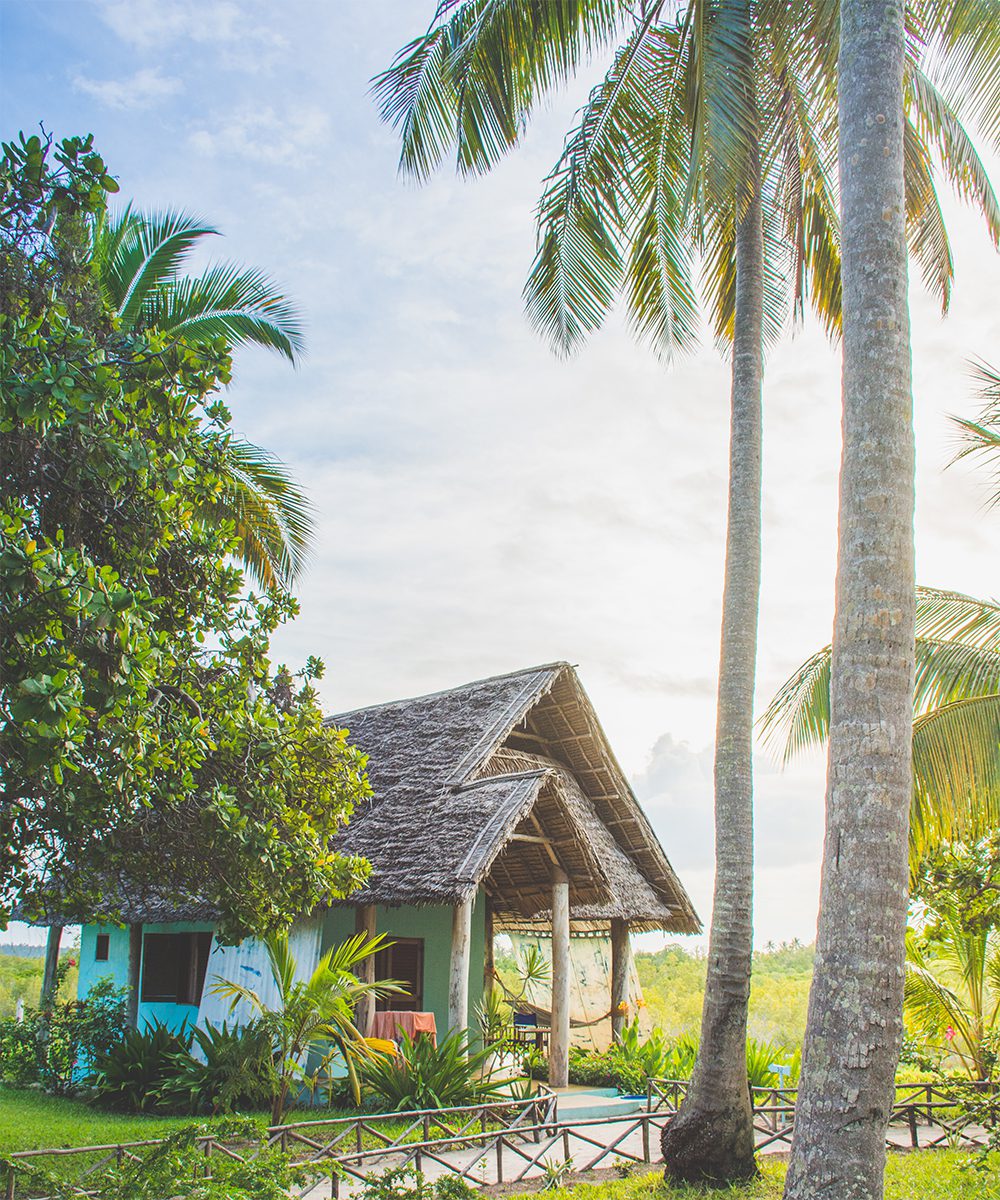
Mafia Island – Hammocks adorn every entrance at Butiama’s beach bungalows
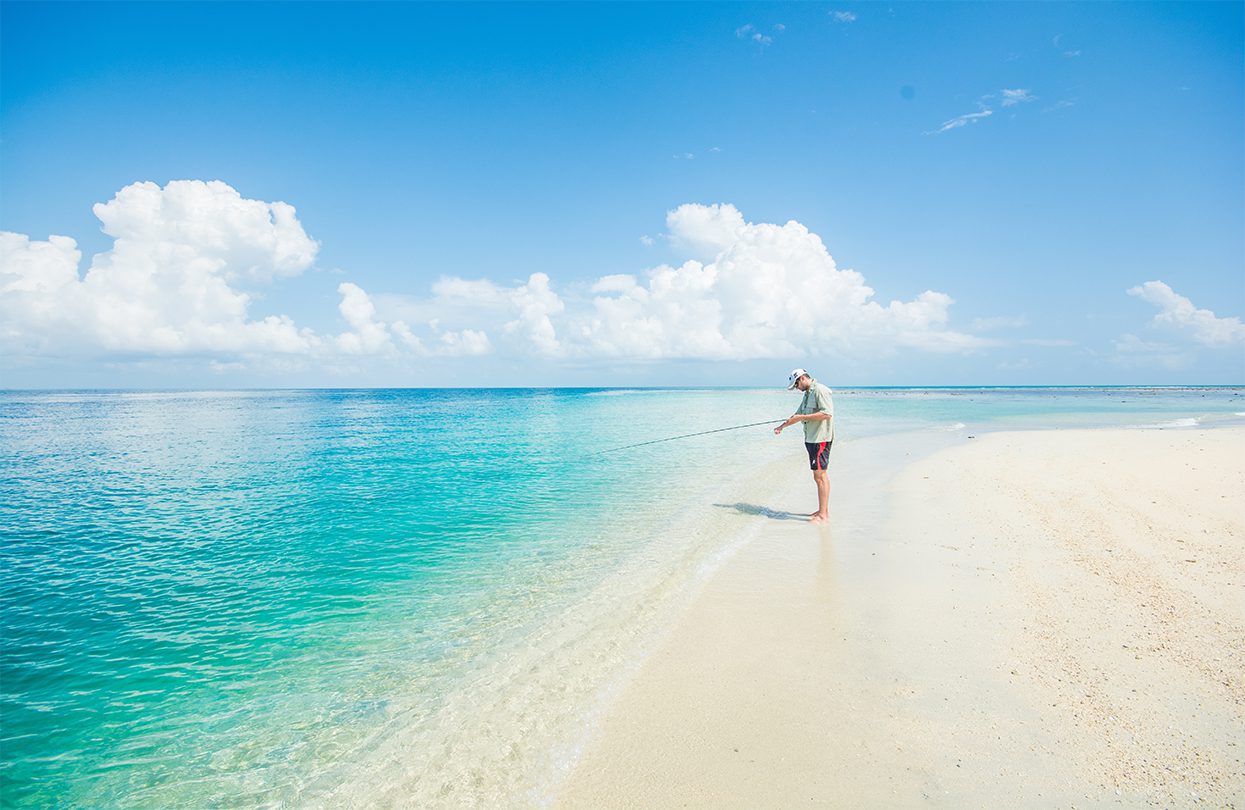
Mafia Island – Fishing is a popular activity on Mafia Island
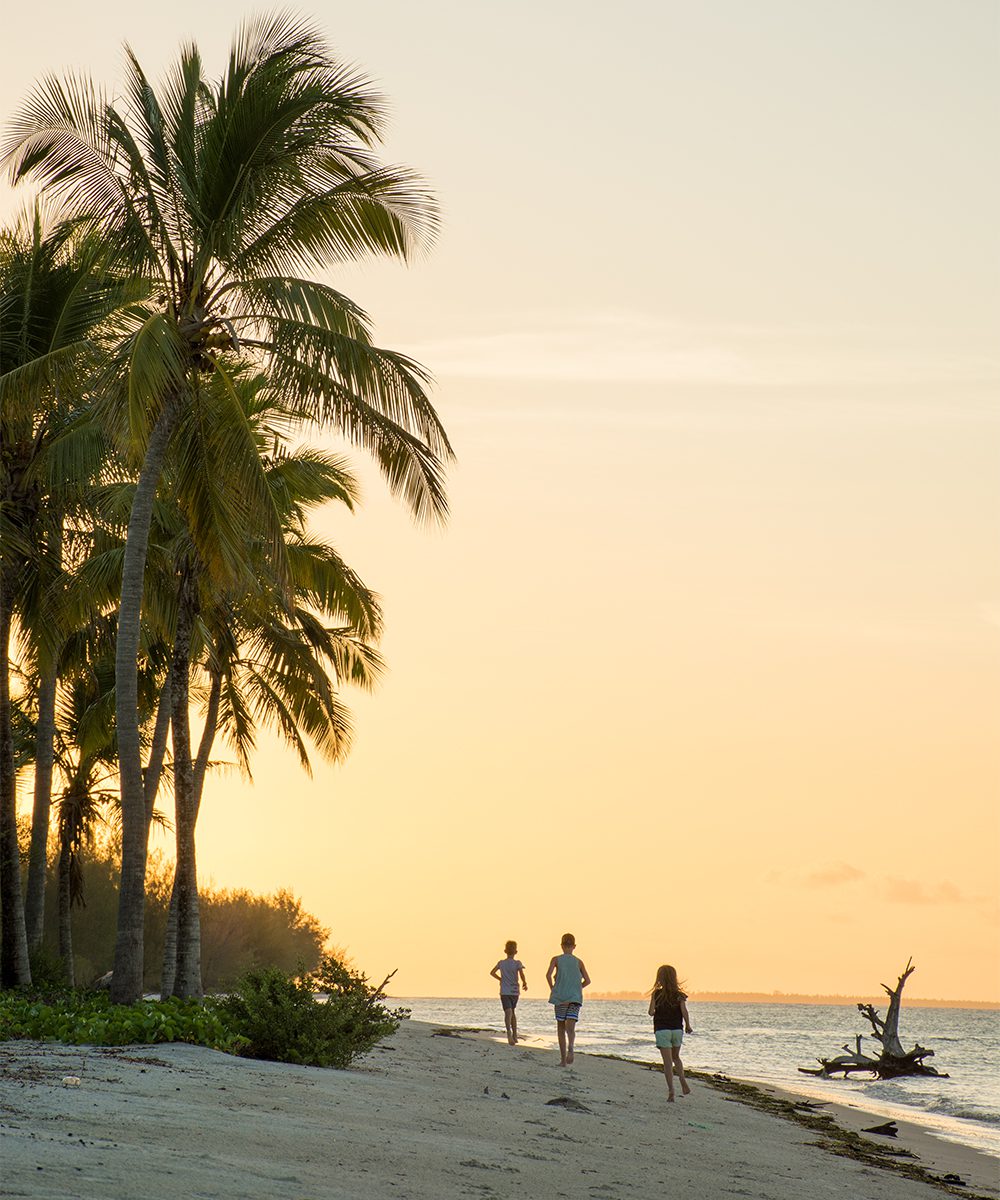
Mafia Island – Sunset walks towards the lagoon at Butiama Beach
Back on land, Maura Cavallo and Moez Kassam (our charming hosts) ensure that Butiama Beach lodge delivers on every level. An Italian before moving to the island, Maura’s menu doesn’t disappoint with speciality seafood dishes freshly sourced and traditional classics like ravioli. At the same time, Moez ensured a sterling service at our table, which had us sat in the sand below the stars.
By day, we kayaked to the mangroves at high tide, searched for starfish at low tide and dived the pristine marine reserve. A highlight was biding time between the outstanding dips with hot ginger tea aboard a dhow. At lunchtime, we chose between a beach barbecue on the white-gold sandbanks (with not another tourist in sight) or flitting between the pool and the seaside spa. Both of us took to all like a fish to water.
For accommodation within the marine park, why not embrace another environmentally-friendly stay. A low environmental impact stay, Pole Pole Bungalows (polepole.com) consists of just ten suites built on stilts, set in subtropical gardens and offers the ideal digital detox.
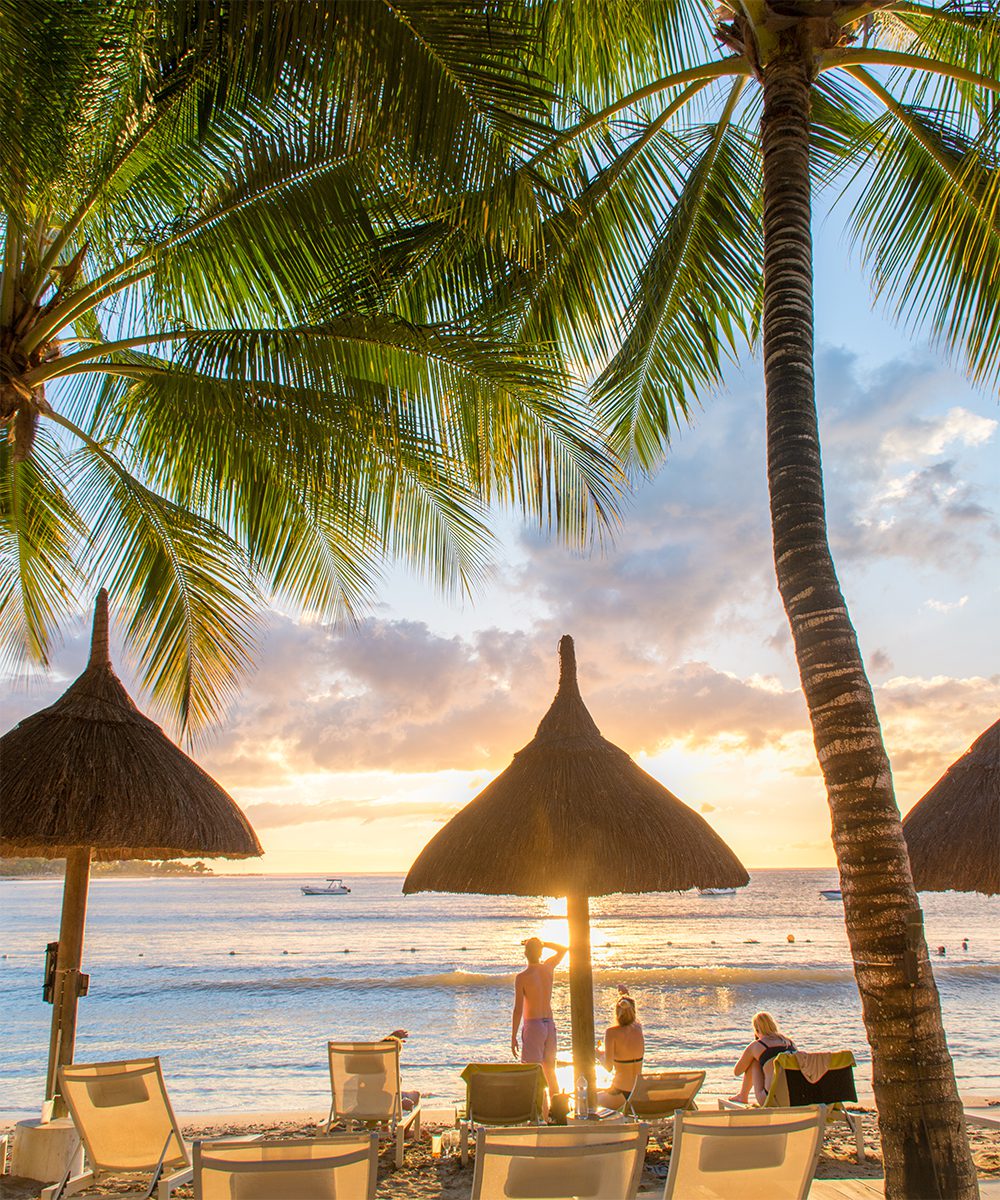
The national flag of Mauritius represents the Flamboyant Tree in red, the Indian Ocean in blue, the sunshine in yellow, and the vegetation of the island in green
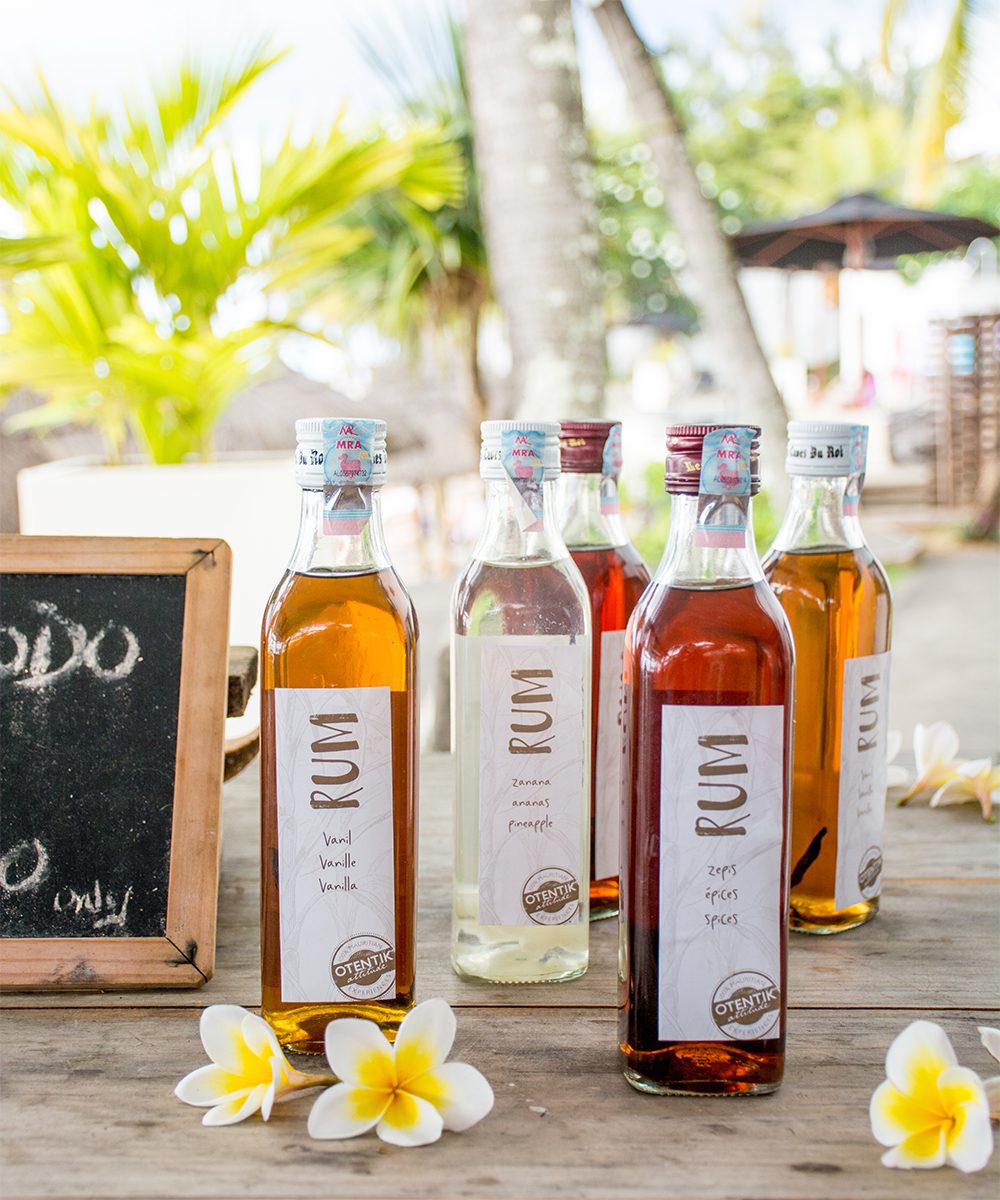
Mauritius – The island is famed for fantastic rum concoctions
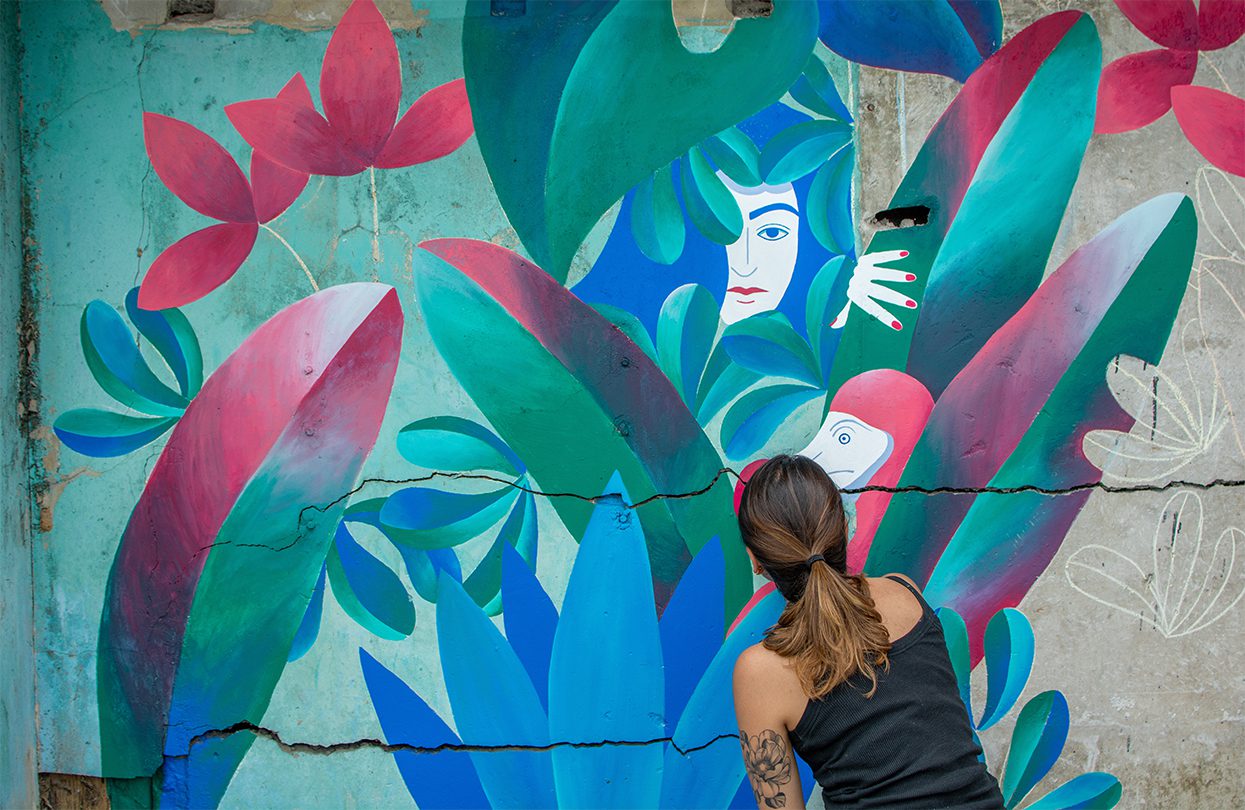
Mauritius – Street art in Port Louis
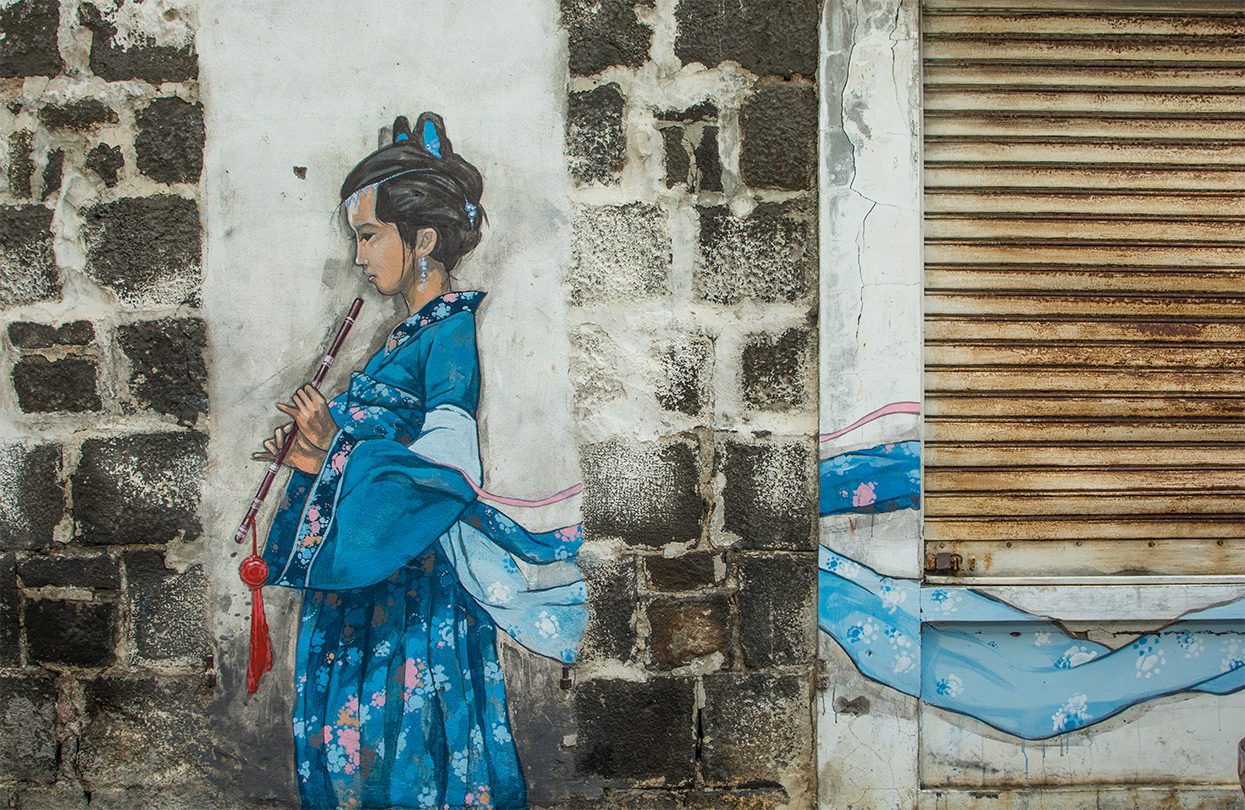
Mauritius – Artful Grafitti hints at the indentured labour history of the capital
Sweet Eats
Mauritius
Mauritius’ capital, Port Louis (locally pronounced Por Loowee), doesn’t often command the spotlight, which is a sad state of affairs. Named a top destination for street food by those in the know seeking out all things gourmet carves out a decidedly delicious exploration of the island.
Like other islands in the region, Mauritius entertains a dazzling cultural concoction thanks to its 500-year occupation. Influences include those of the Dutch, French, Arabs, Portuguese and the English. Still, the thriving Creole culture of today can be traced back to the sugar-cane fields.
Just like those who worked these cash crops, ApravasiGhat is an excellent place to start. Now a museum, this former immigration depot is a World Heritage Site and was the old landing port for thousands of indentured workers. Set in the harbour, it’s devoid of the usual picturesque palms and white-sand beaches that plaster the brochures, but the maritime scenery is no less charming. The breeze is warm and welcome in the December heat, but I thankfully duck from the sun and seek shelter inside.
Between 1834 and 1920, I learn how indentured labourers arrived here from China, Comoros, India, Madagascar, Mozambique, South East Asia and even Yemen to work on Mauritius’ growing plantations or to be transhipped to Réunion, Southern and Eastern Africa or the Caribbean. The largest contingent, a staggering total of 462000 people, was received in Mauritius.
After the sobering displays, I visit the bustling Victorian-era market next. It overflows with subtropical fruit, such as mango, bananas, limes, melons and even vegetable and herb bundles destined for soup, all strung together in delicate twine. Sticky lychees ooze a seductive scent, and I succumb to a freshly squeezed juice from a corner of the substantial warehouse.
I am surprised at the amount of signage in English and feel at ease roaming the streets alone. I discover eateries in the charming Chinatown district where dumplings and sticky baked goods beckon from the window displays. Dhal puri and roti chaud, remnants of Indian heritage, are easily found in the glass-cased vendor trolleys pushed down the sidewalks. Motorcycles whizz by and one pulls off near me after being flagged down by a grandmother and her gaggle of grandkids. They gather around for a sorbet rapé – a traditional treat of crushed ice (prepared on-site thanks to an ancient wind-up mechanism fixed to the back of his bike) flavoured with brightly-coloured sugar-cane syrup.
I then sit for a while, with a vegetable roti in hand from the esteemed Roti Aka Vinoda, in the Company Garden. From my perch below a Banyan Tree, I overhear a tour guide share that Mauritius is one of ten countries in the world that’s never had a war.
Ultimately, I do return to the irresistible coast. Ancient trees line the road to a swanky resort and my driver shares that they were planted by labourers centuries ago, so they could have shade because there was none in the sugar cane fields.
Back at Zilwa Attitude Hotel, after a seafood dinner (I’ve never had marlin carpaccio anywhere else in the world) dessert is a plate of fired fruit. Banana and pineapple glazed to caramel and spiked with rum. I enquire about the offering and am then prescribed a visit to Rhumerie de Chamarelfor a guided tour of the distillery. There, I discover the art of rhumarrangé – liquourflavoured by spice and softened by fruits – and am thrilled with the eco-friendly production and recycling.
By following my sweet tooth, the island not only revealed its remarkable composition of culinary treasures, but it also shared a heritage hard to find from the pool lounger. However, if you are to choose, the deck chairs at SALT of Palmar are an excellent choice for more responsible travellers and have banished the likes of resort buffets. Instead, they claim to know their farmers, fishermen, and growers by name. Named on Time’s illustrious list of World’s Greatest Places in 2019, the boutique hotel aims to allow guests to interact with the Mauritian community ethically. (saltresorts.com) Words & Photographs by Melanie Van Zyl ◼
Subscribe to the latest edition now by clicking here.
© This article was first published in Feb-Mar 2020 edition of World Travel Magazine.

